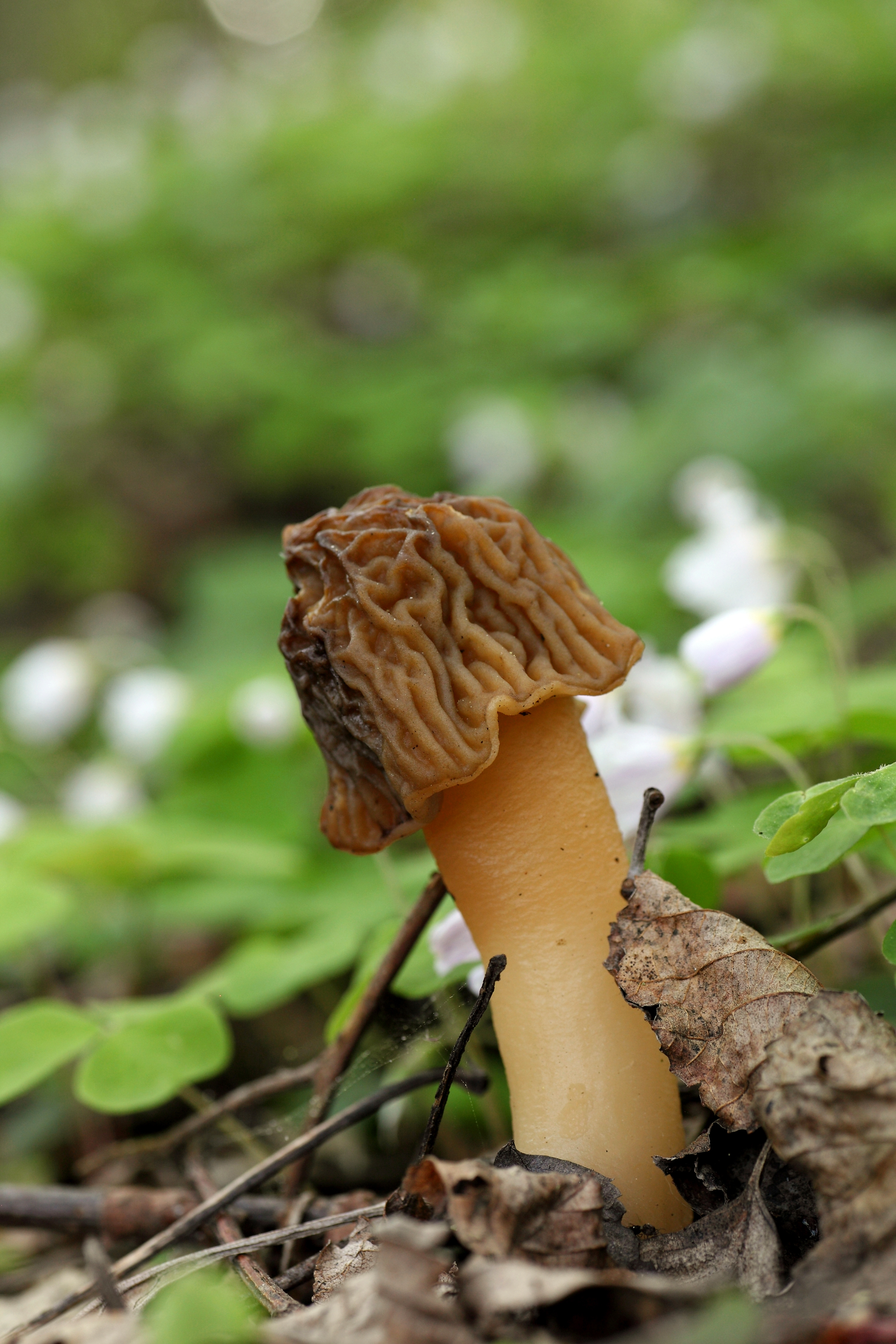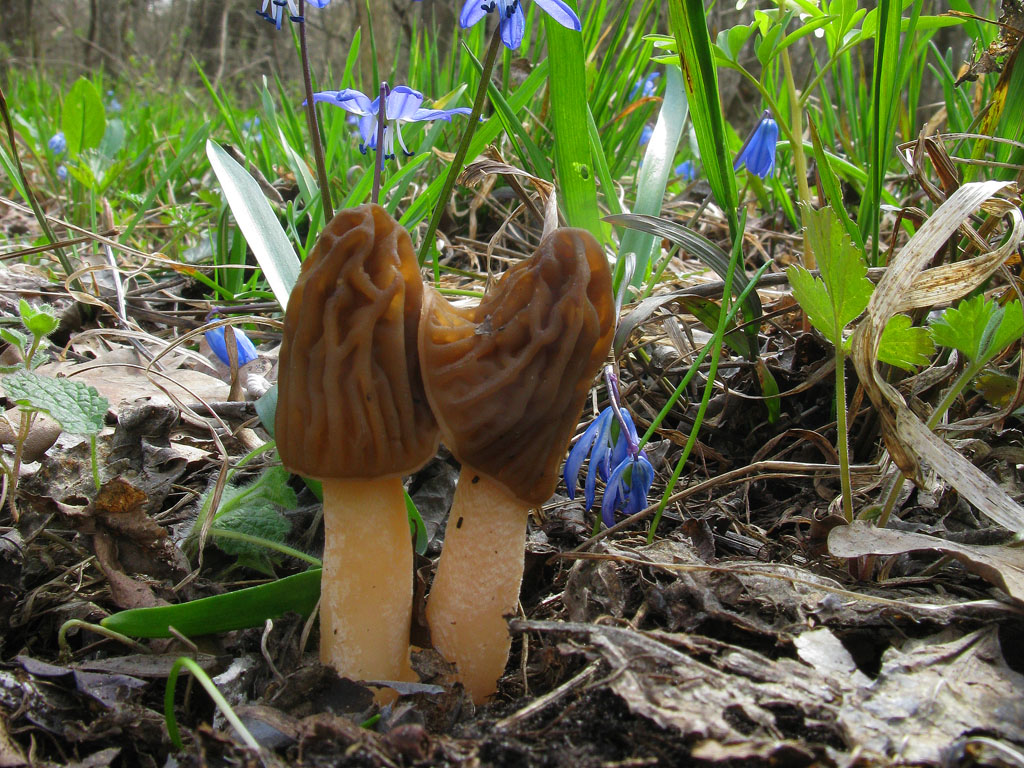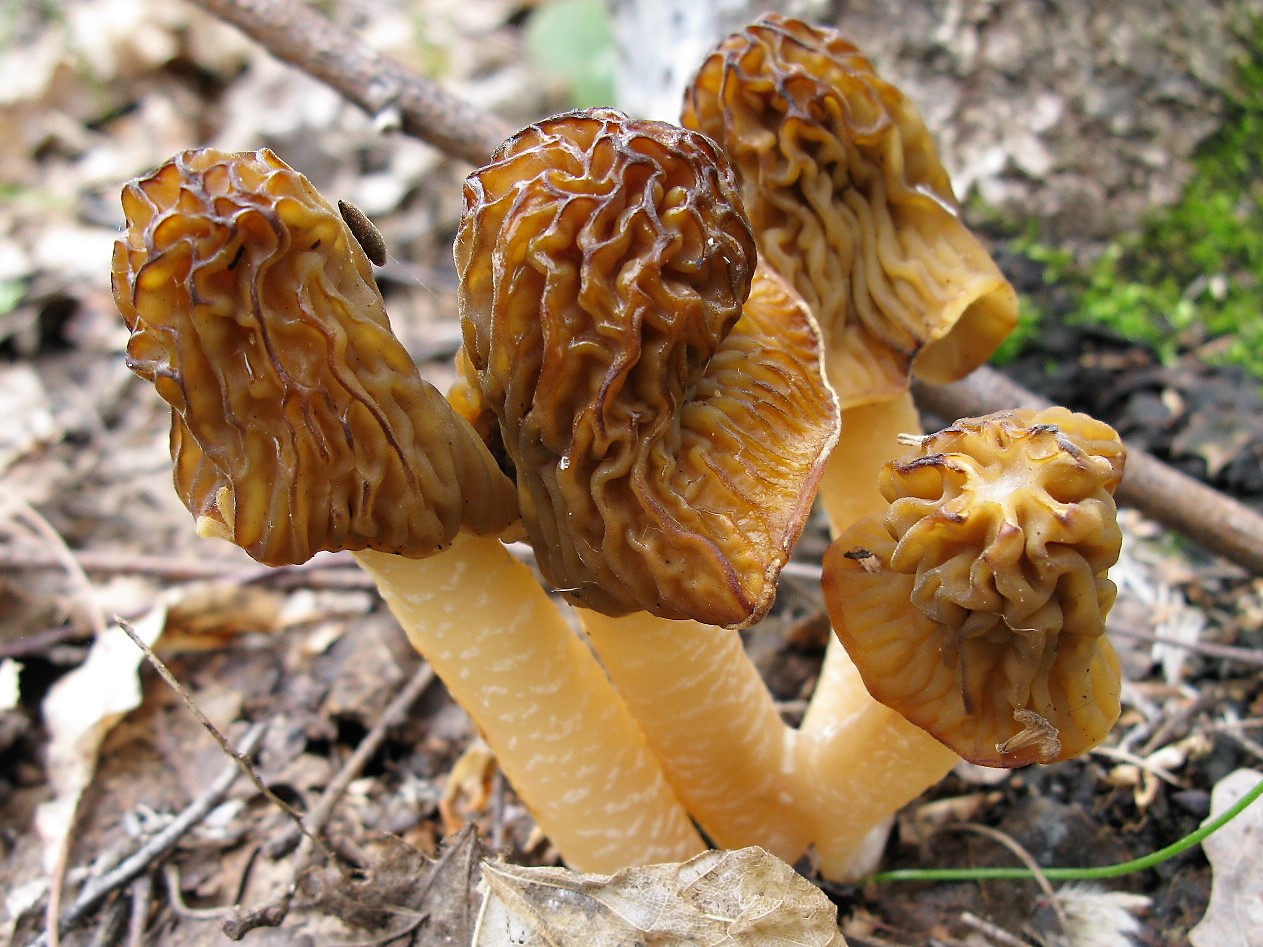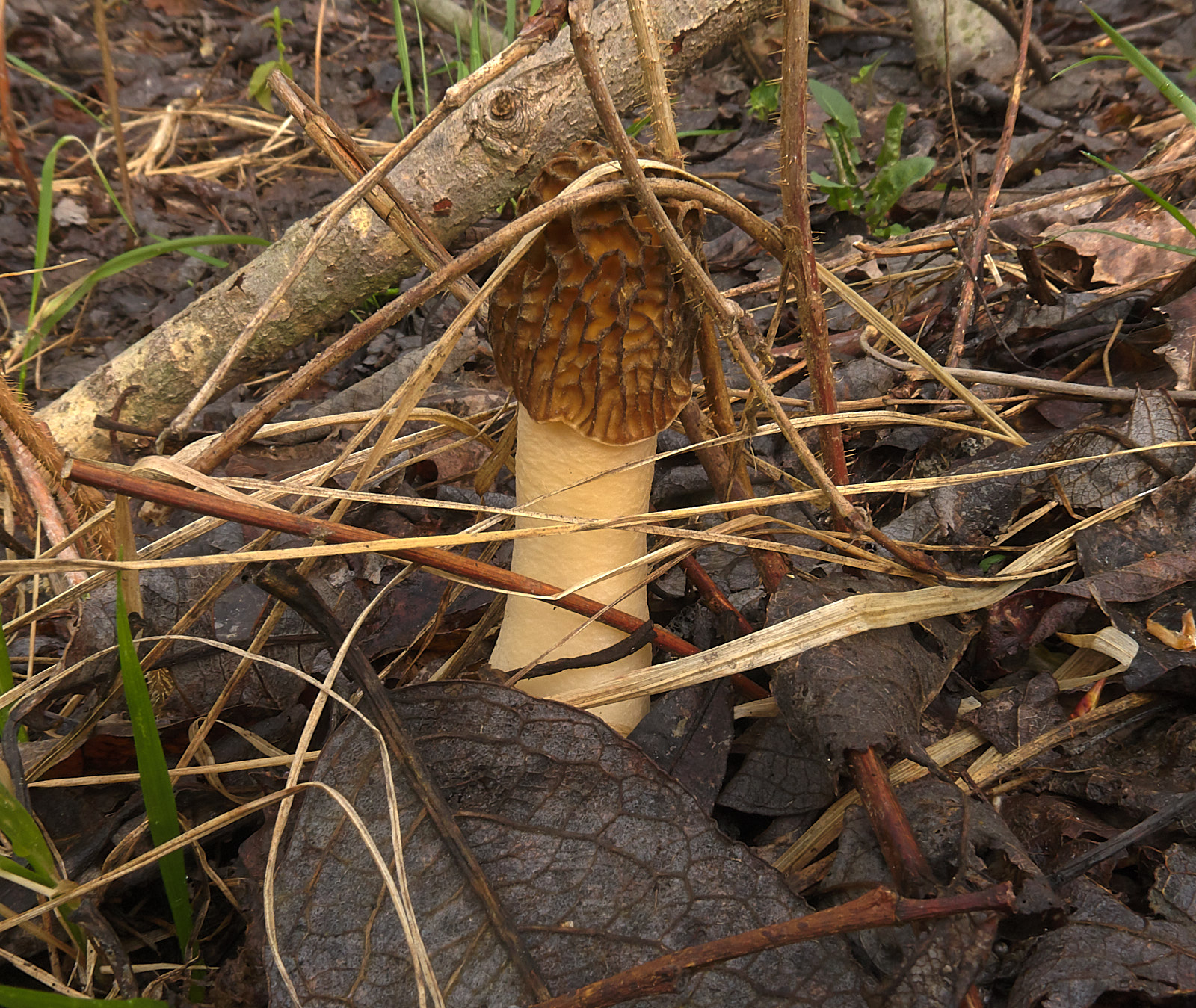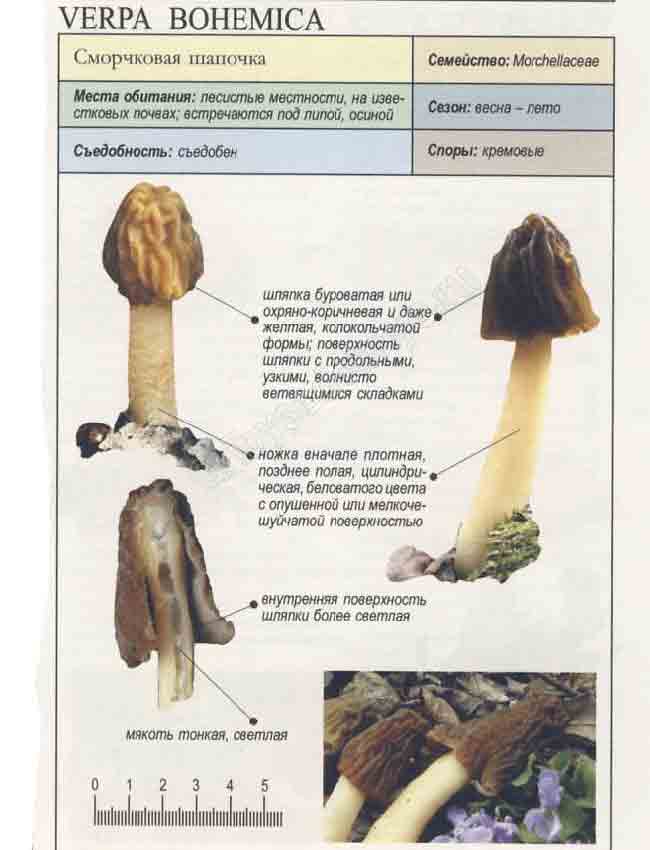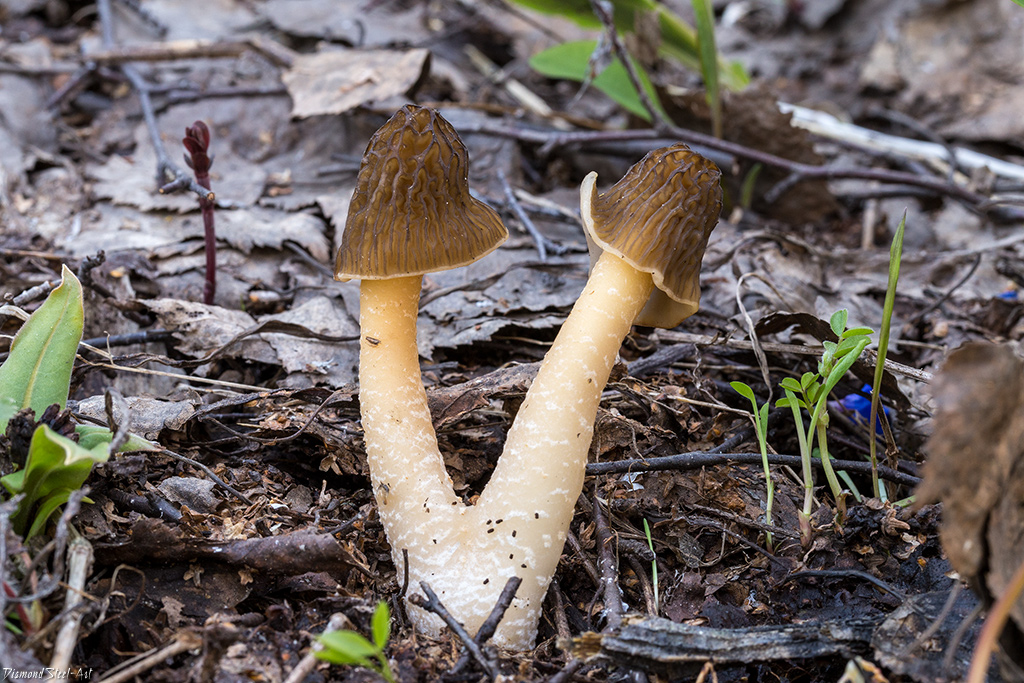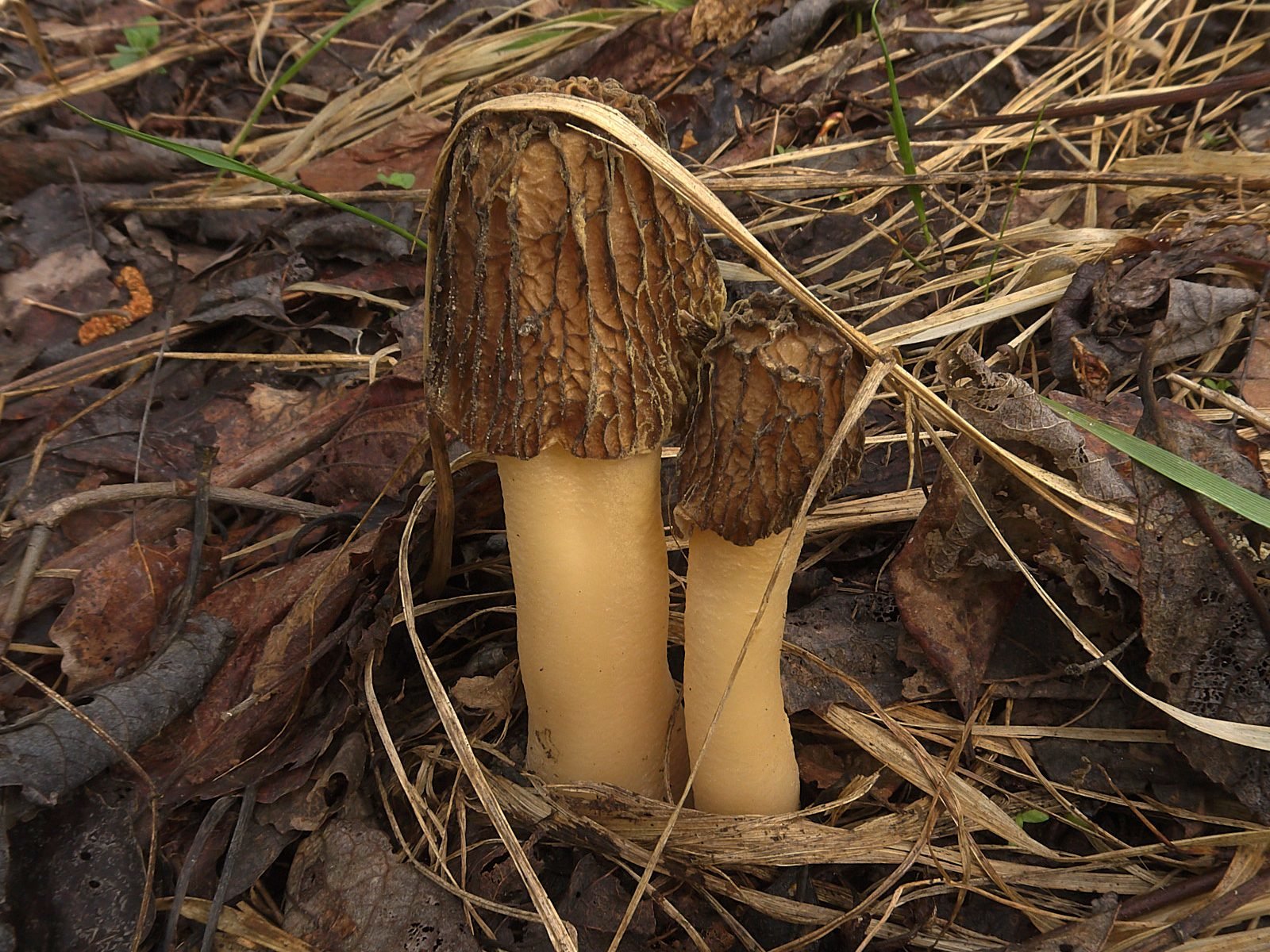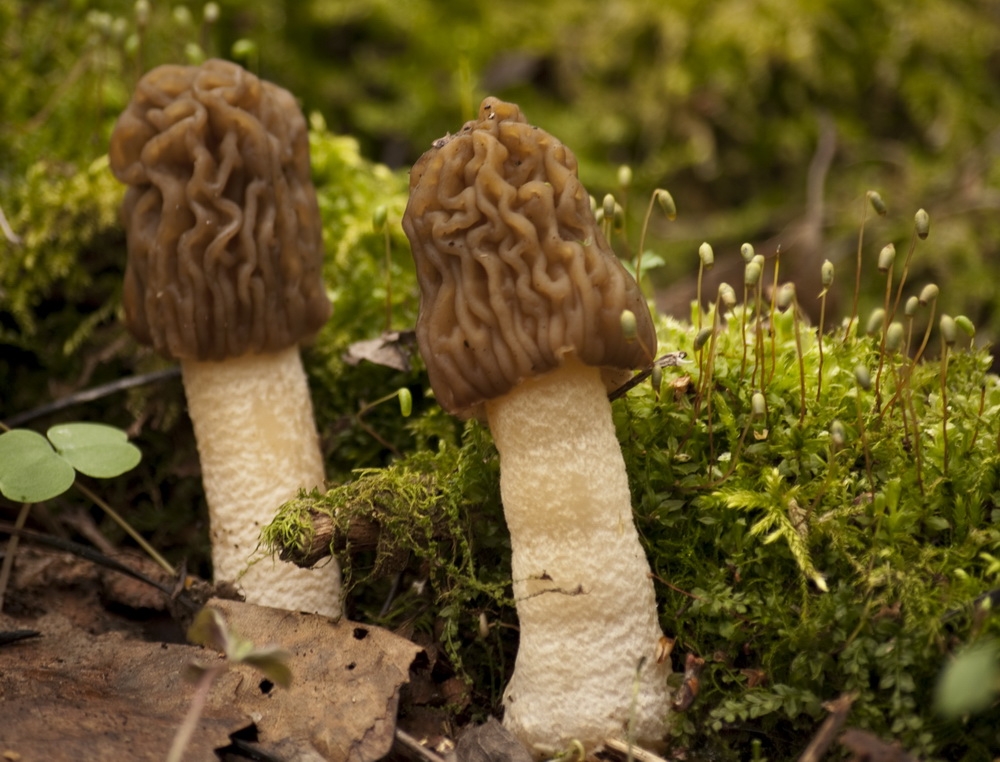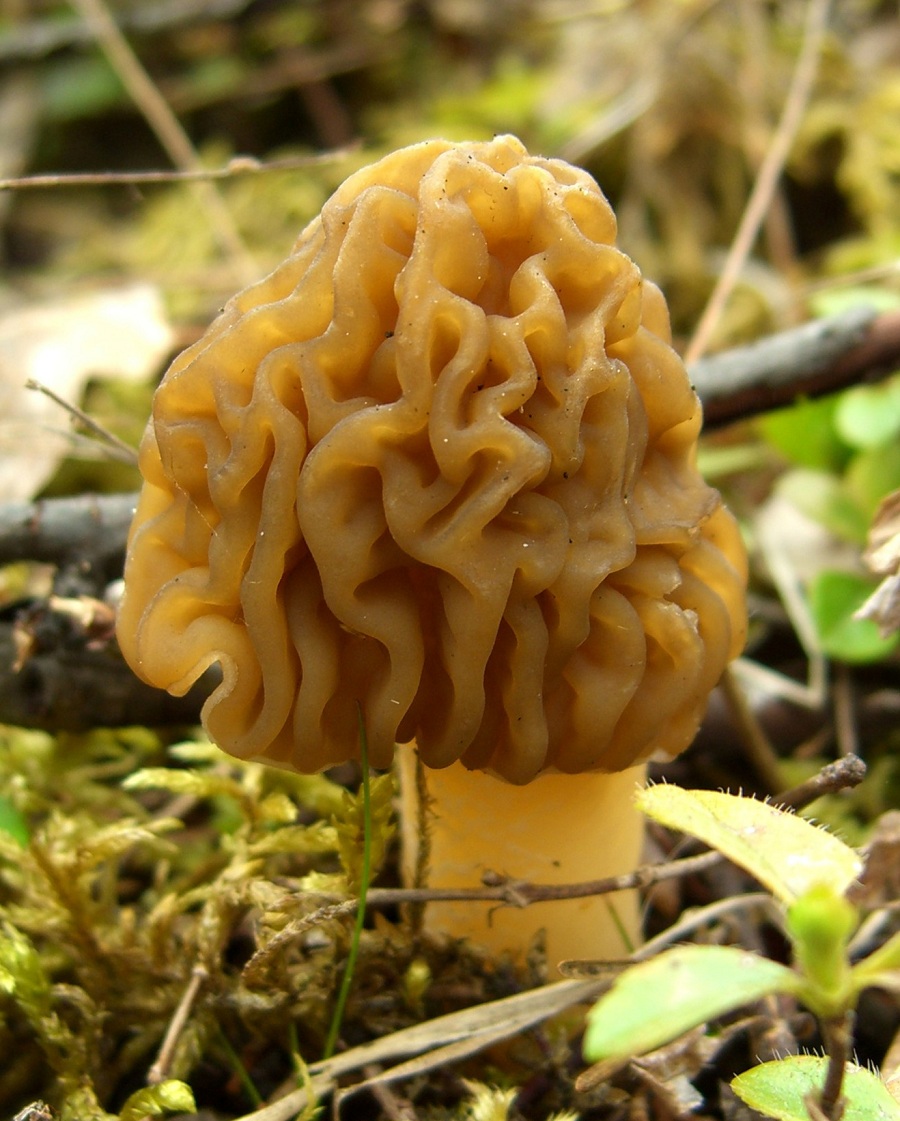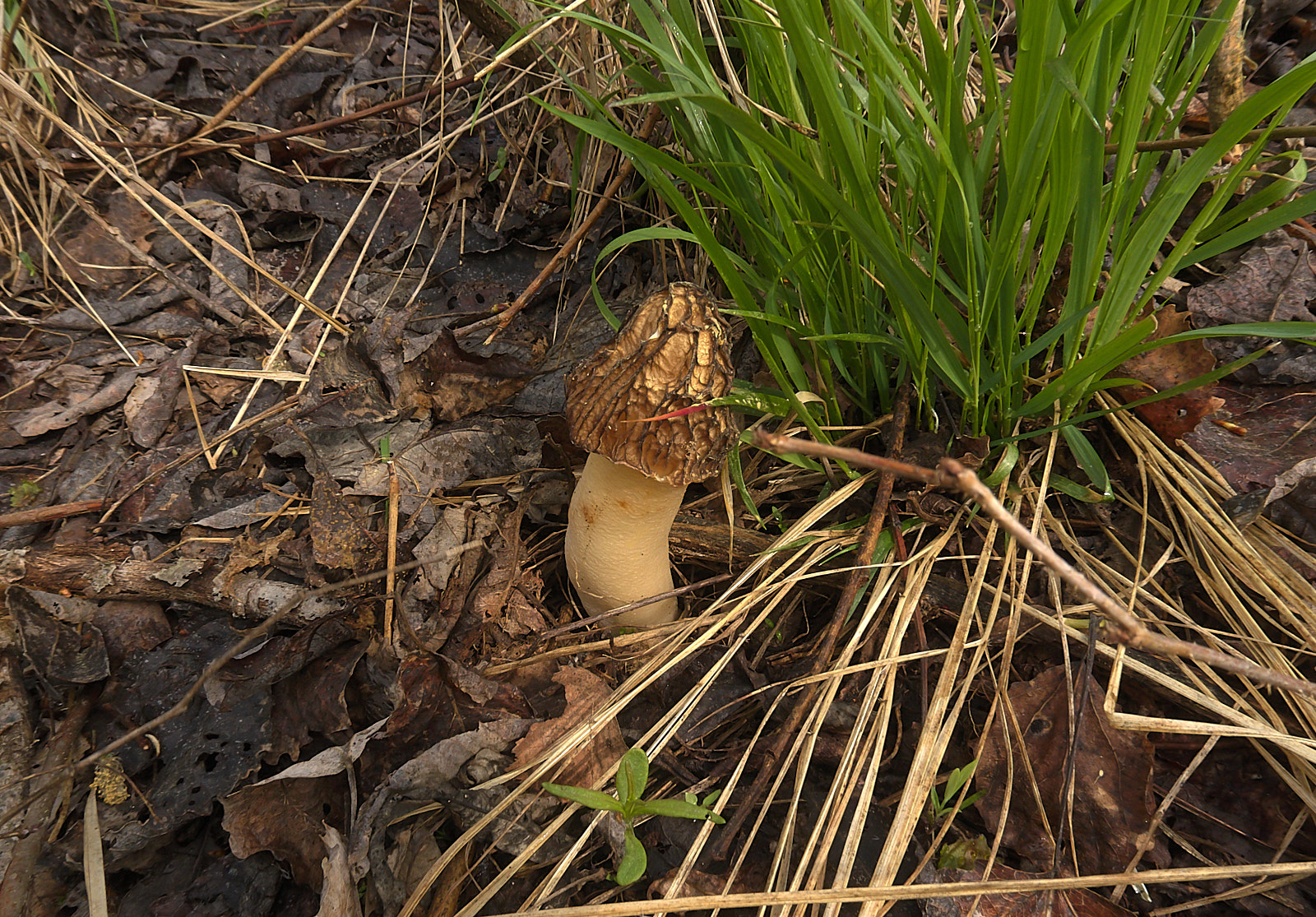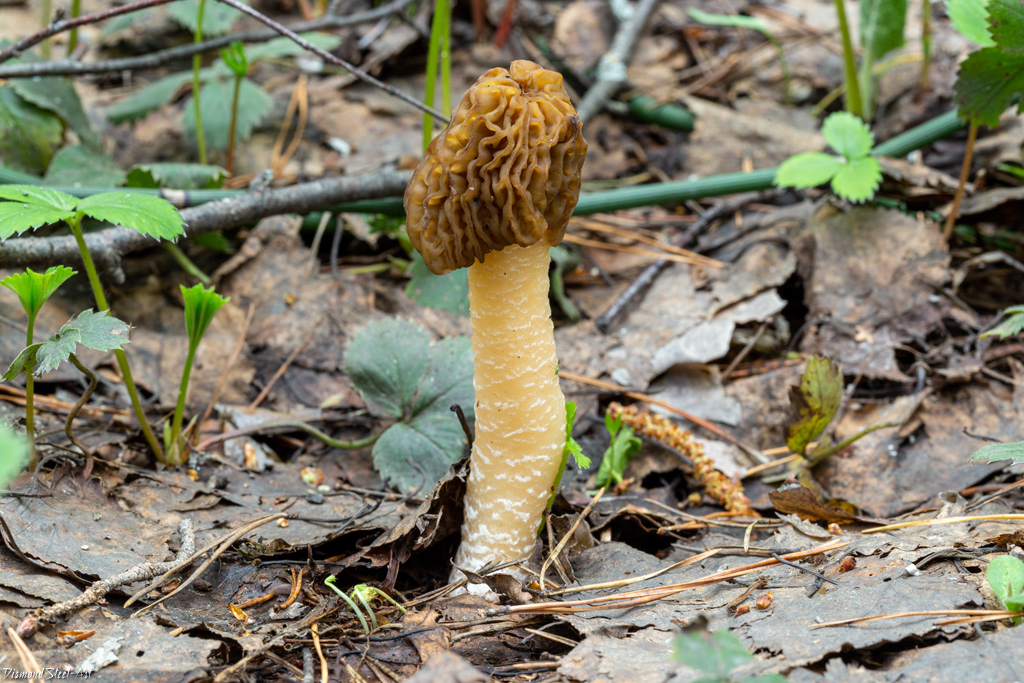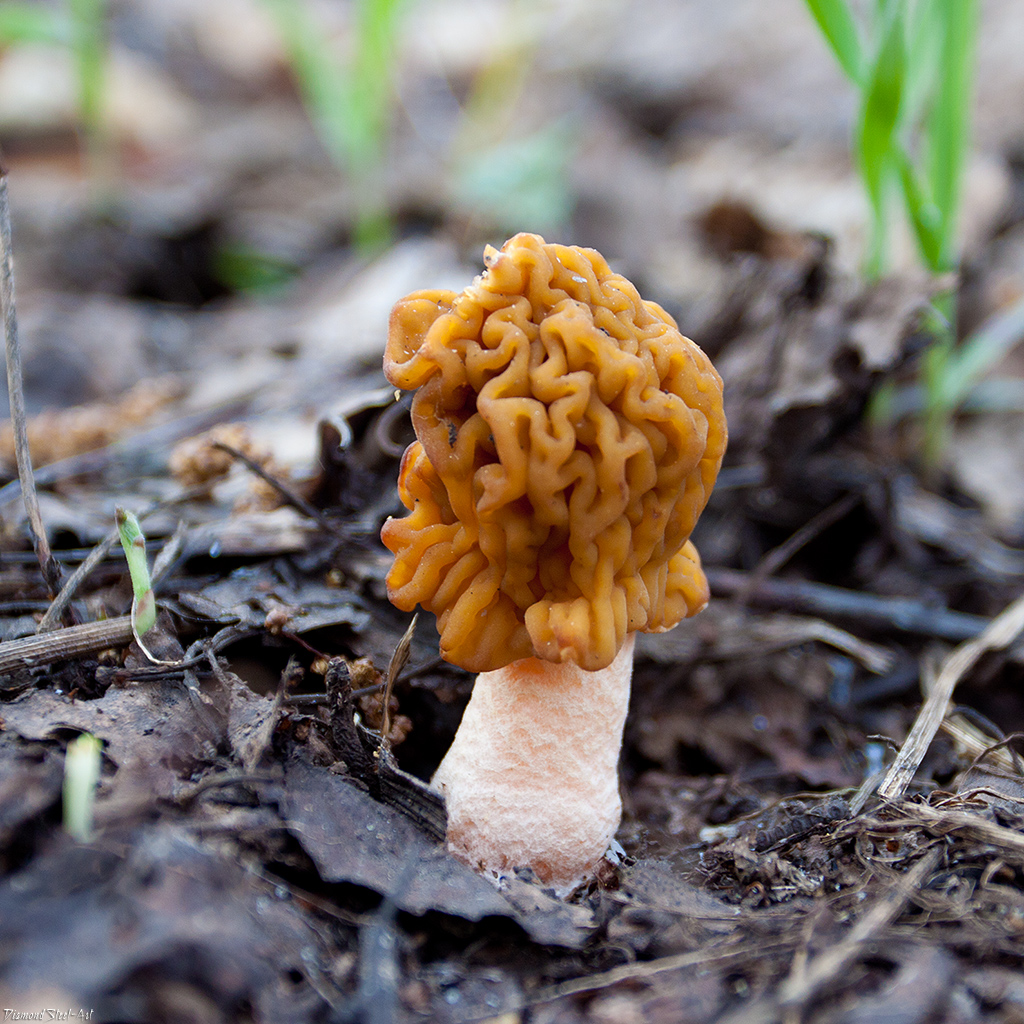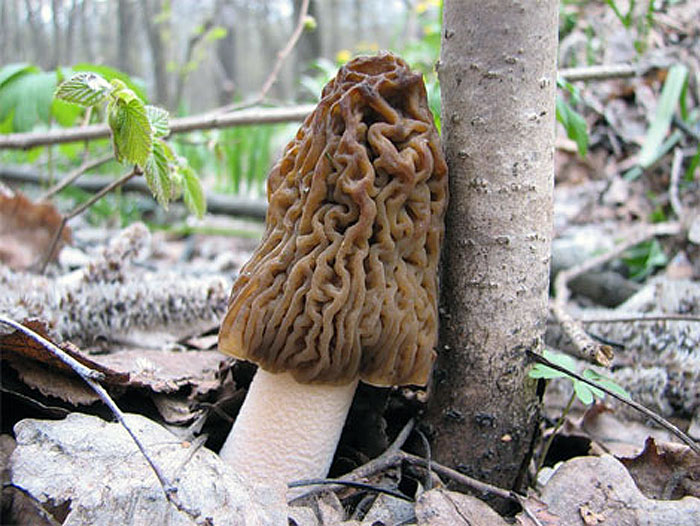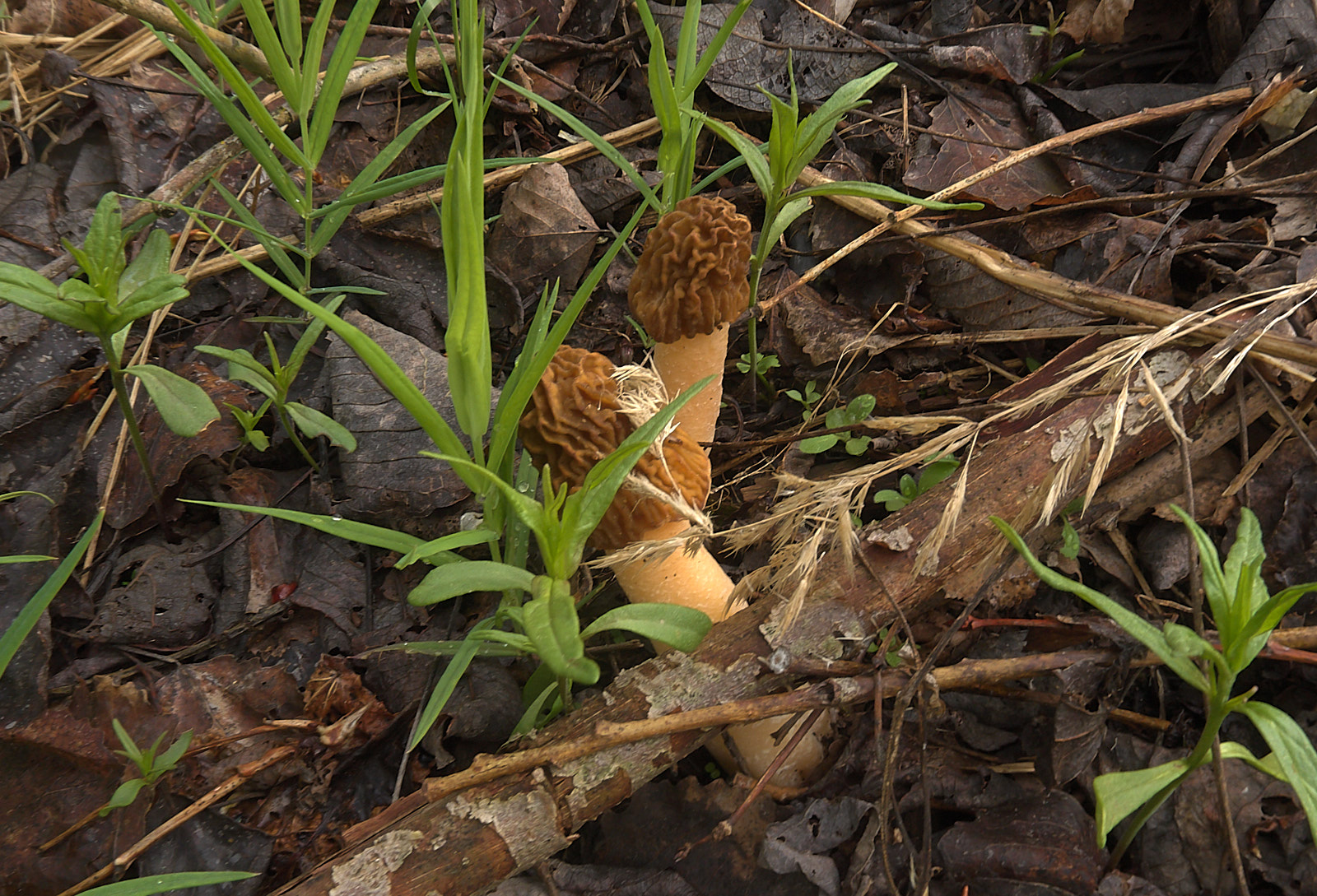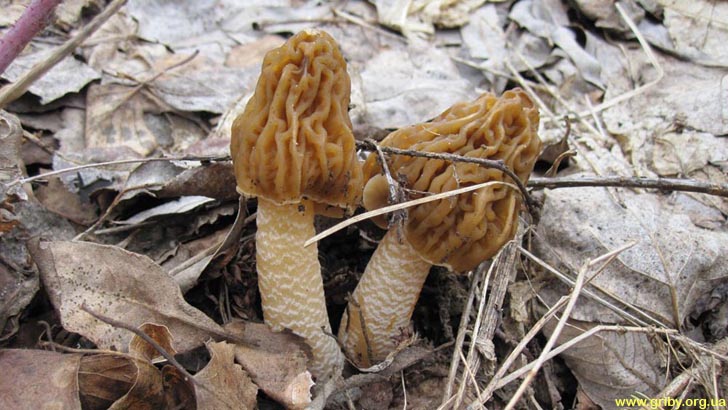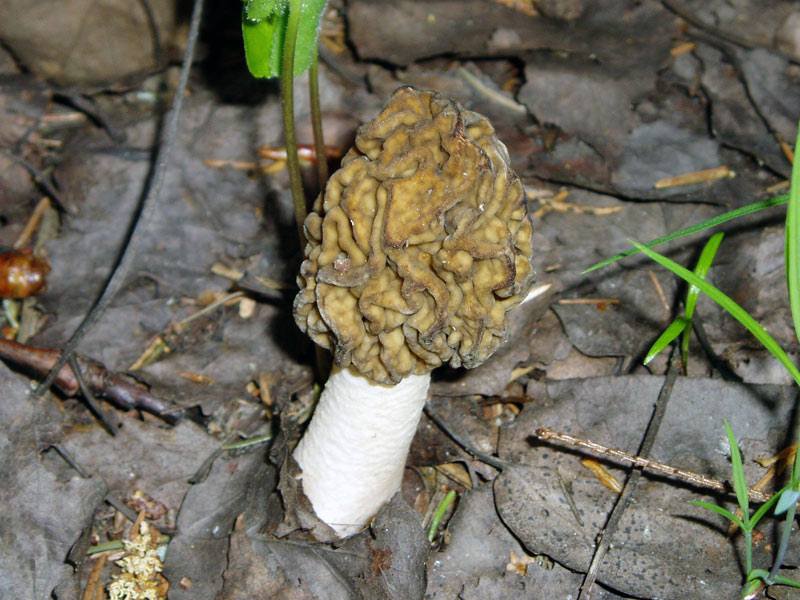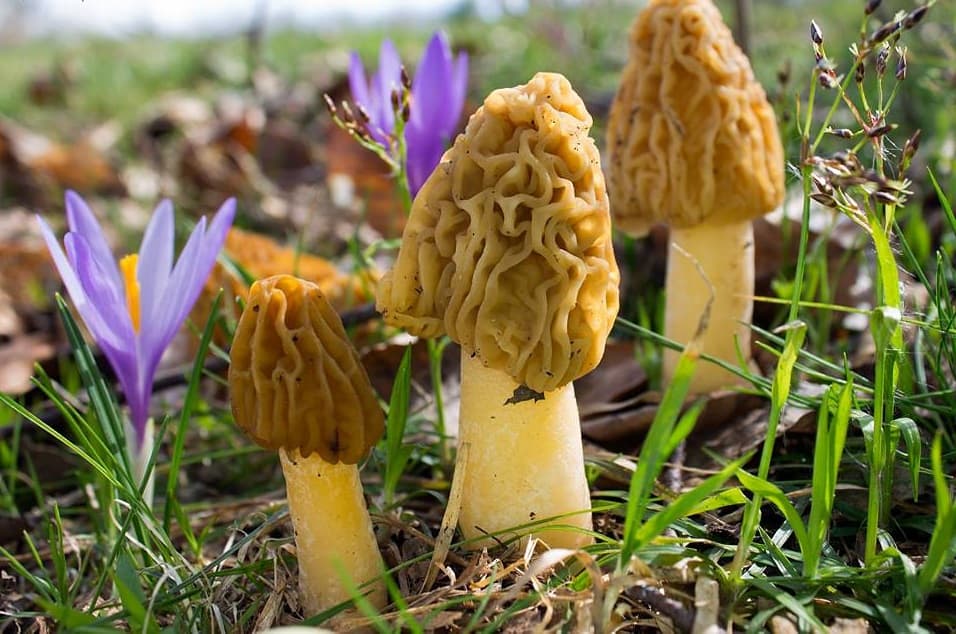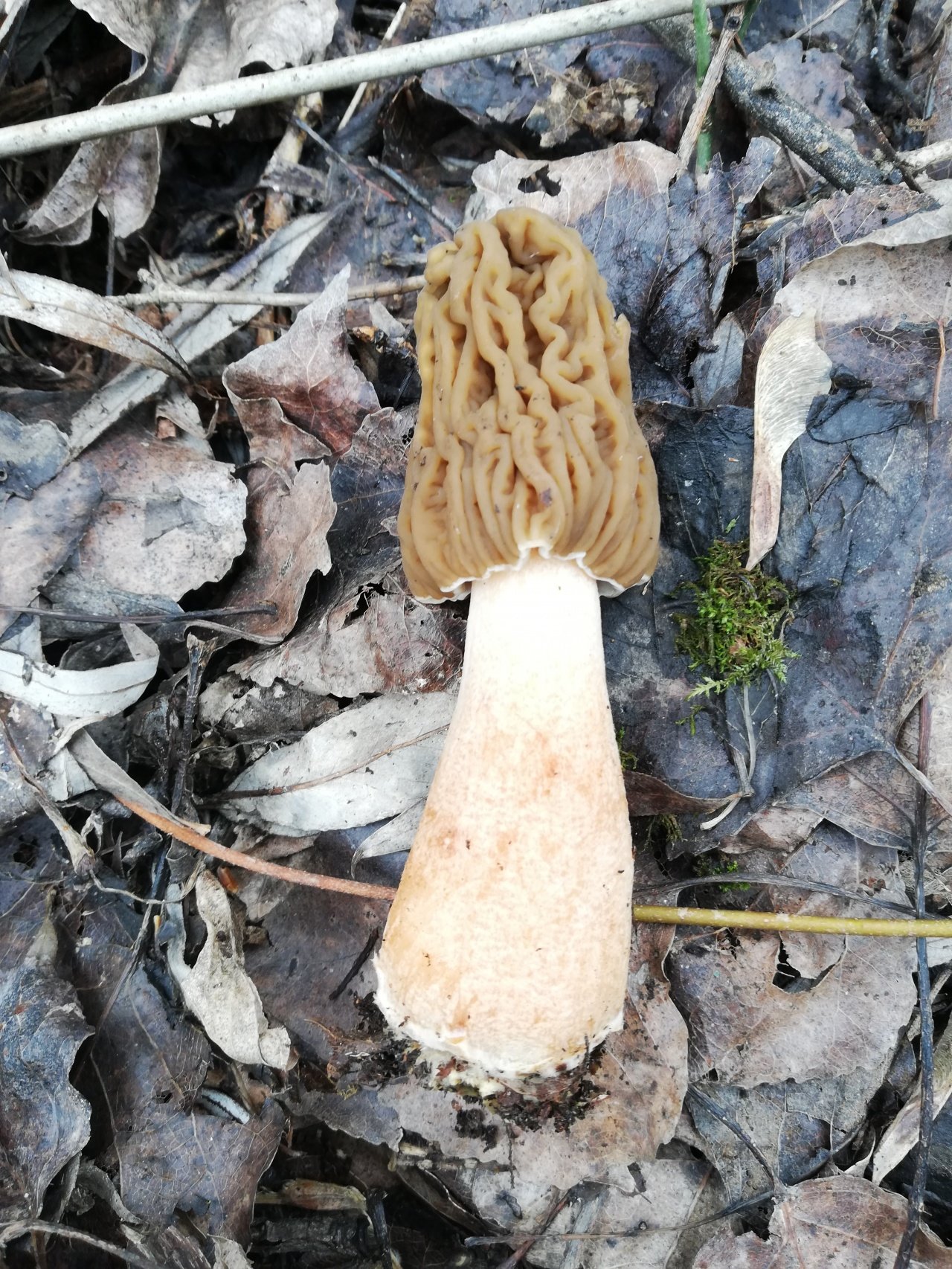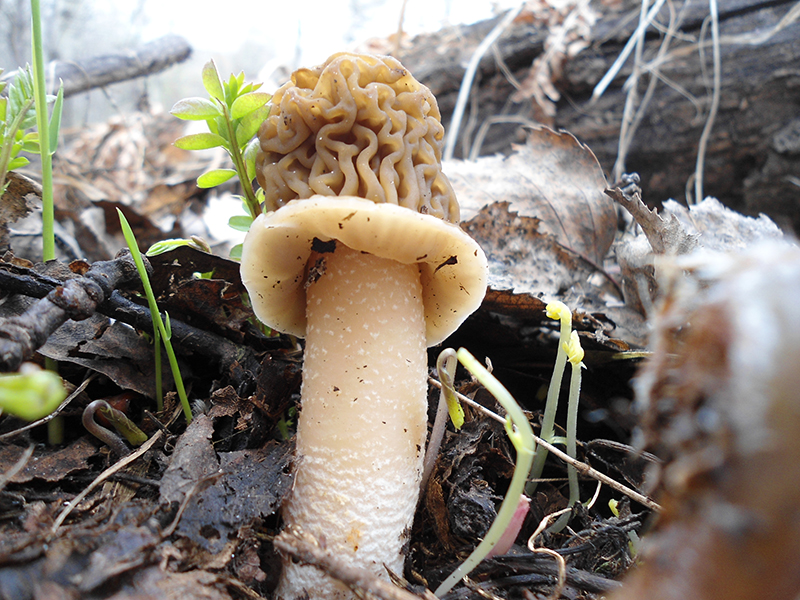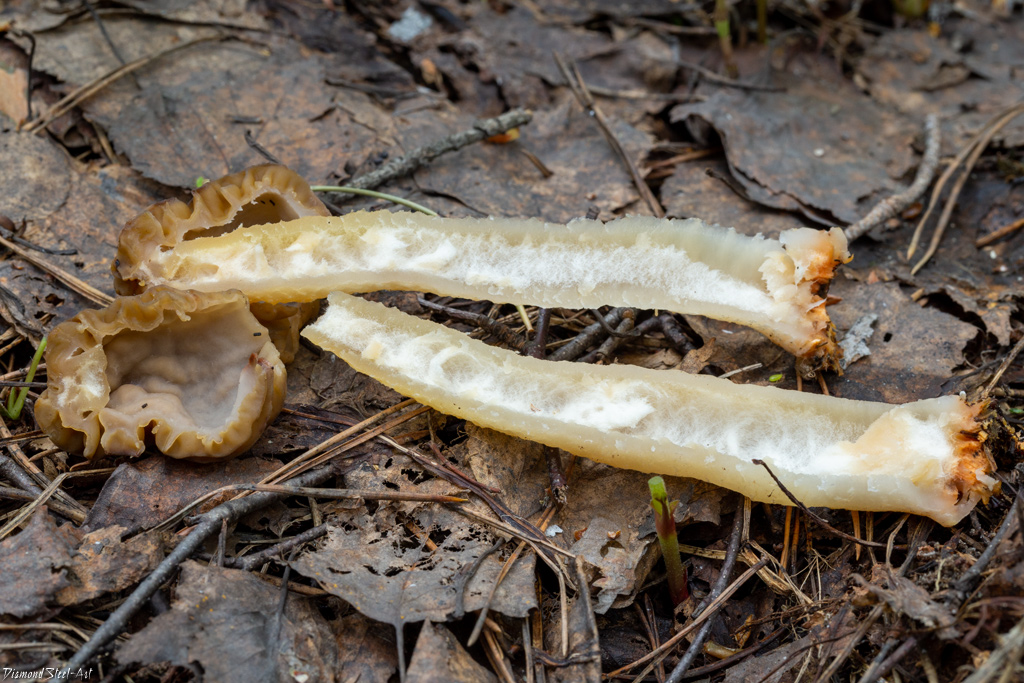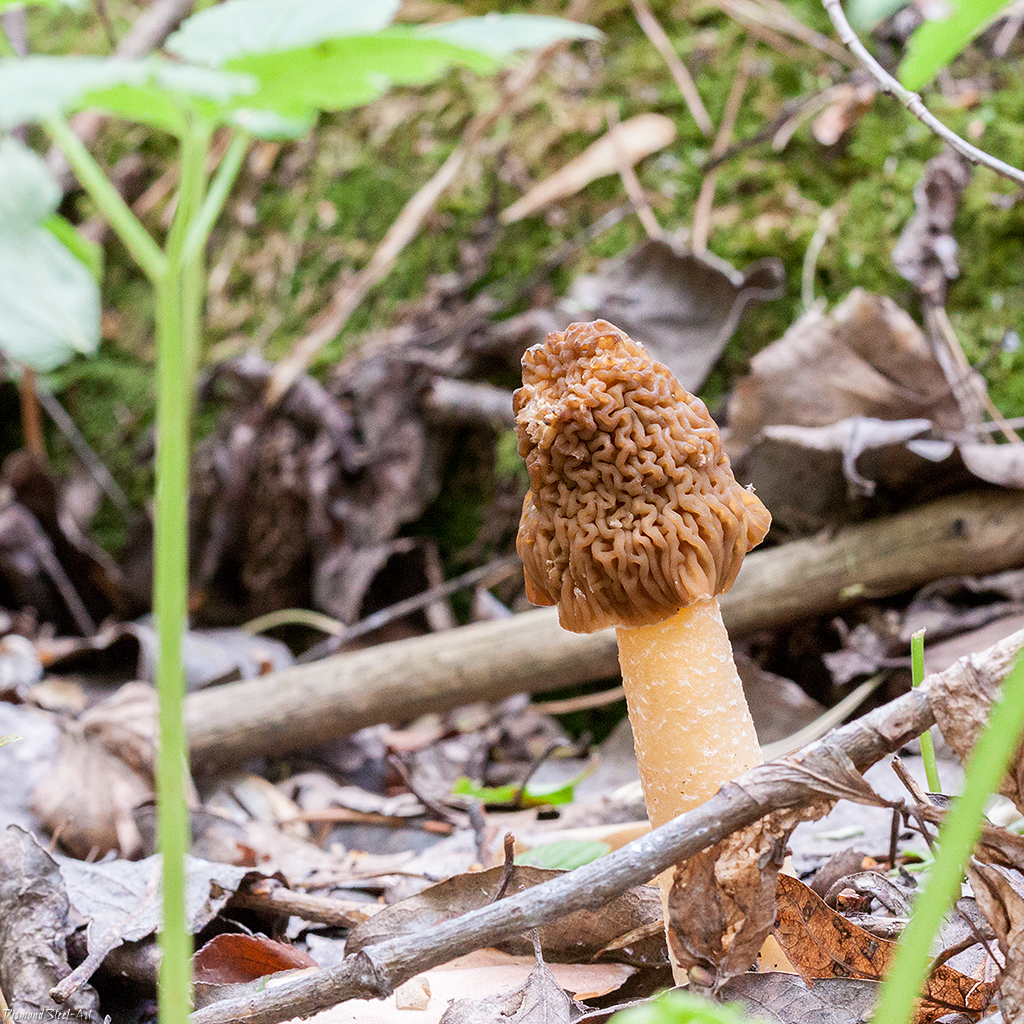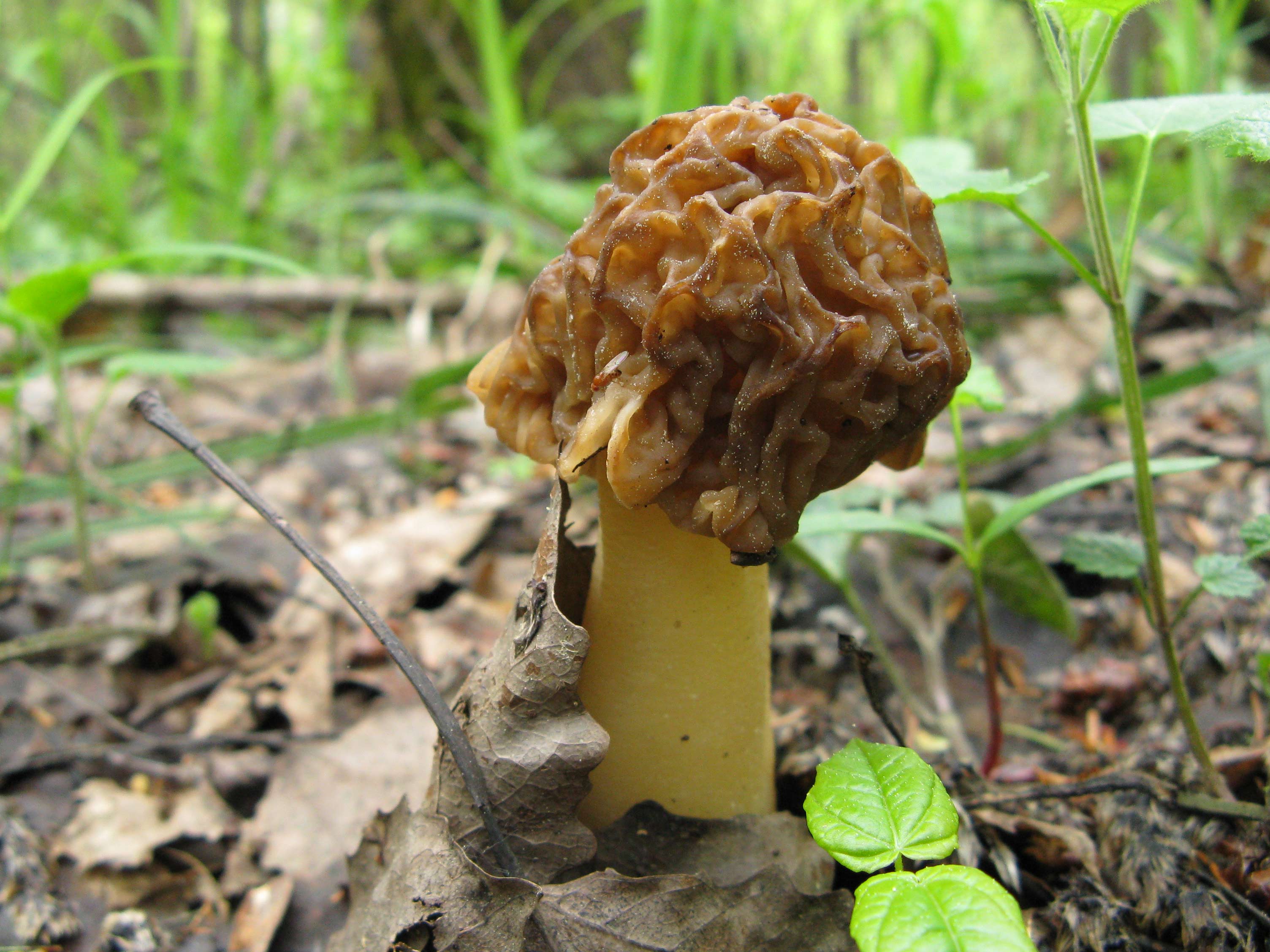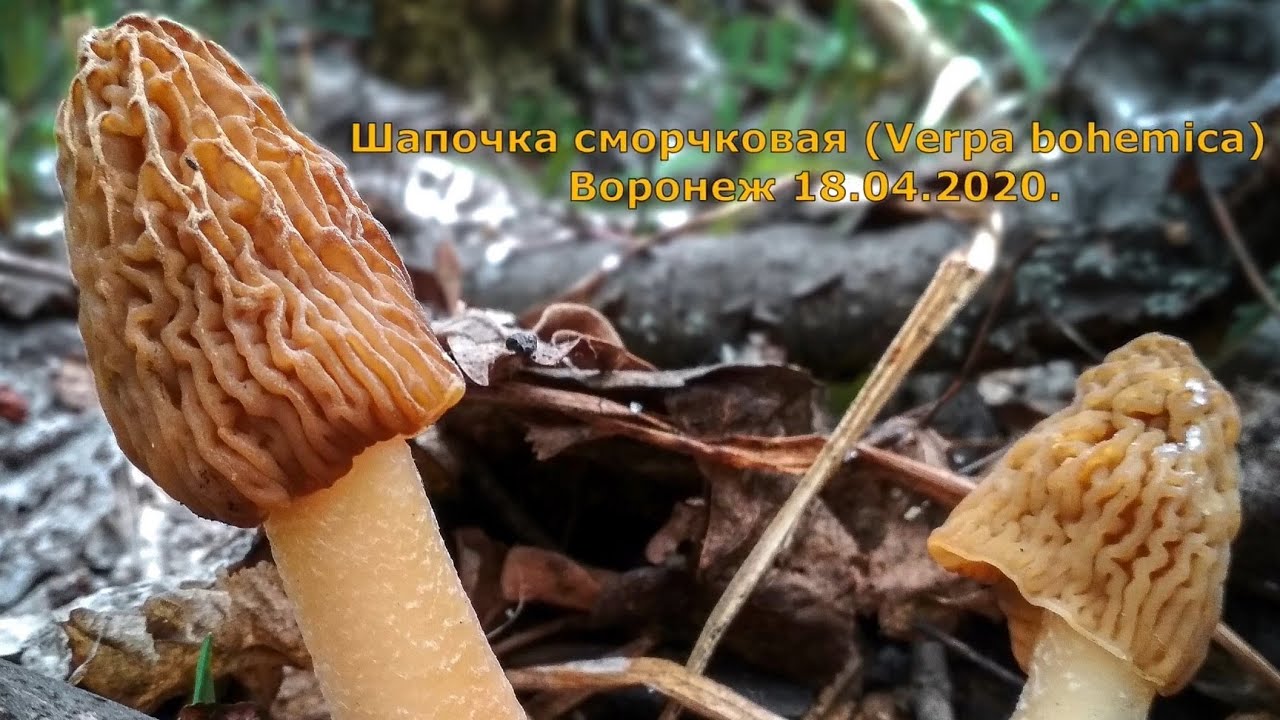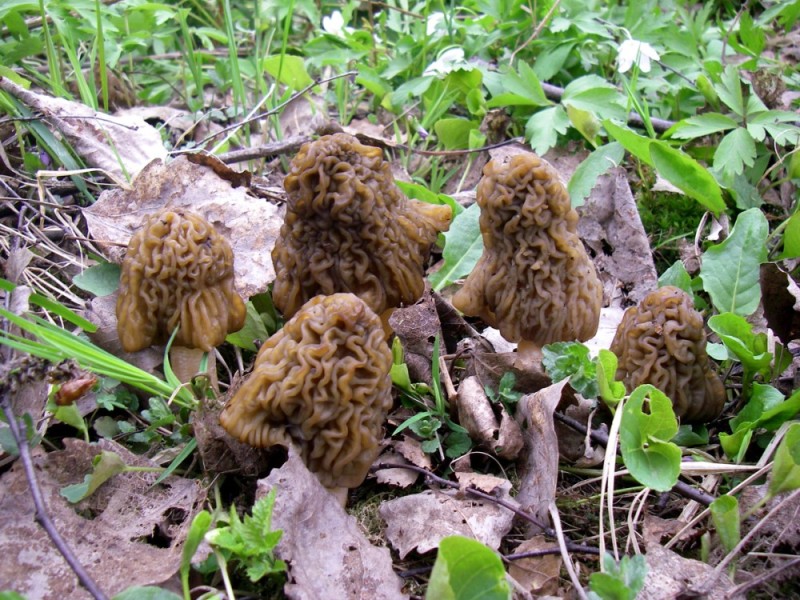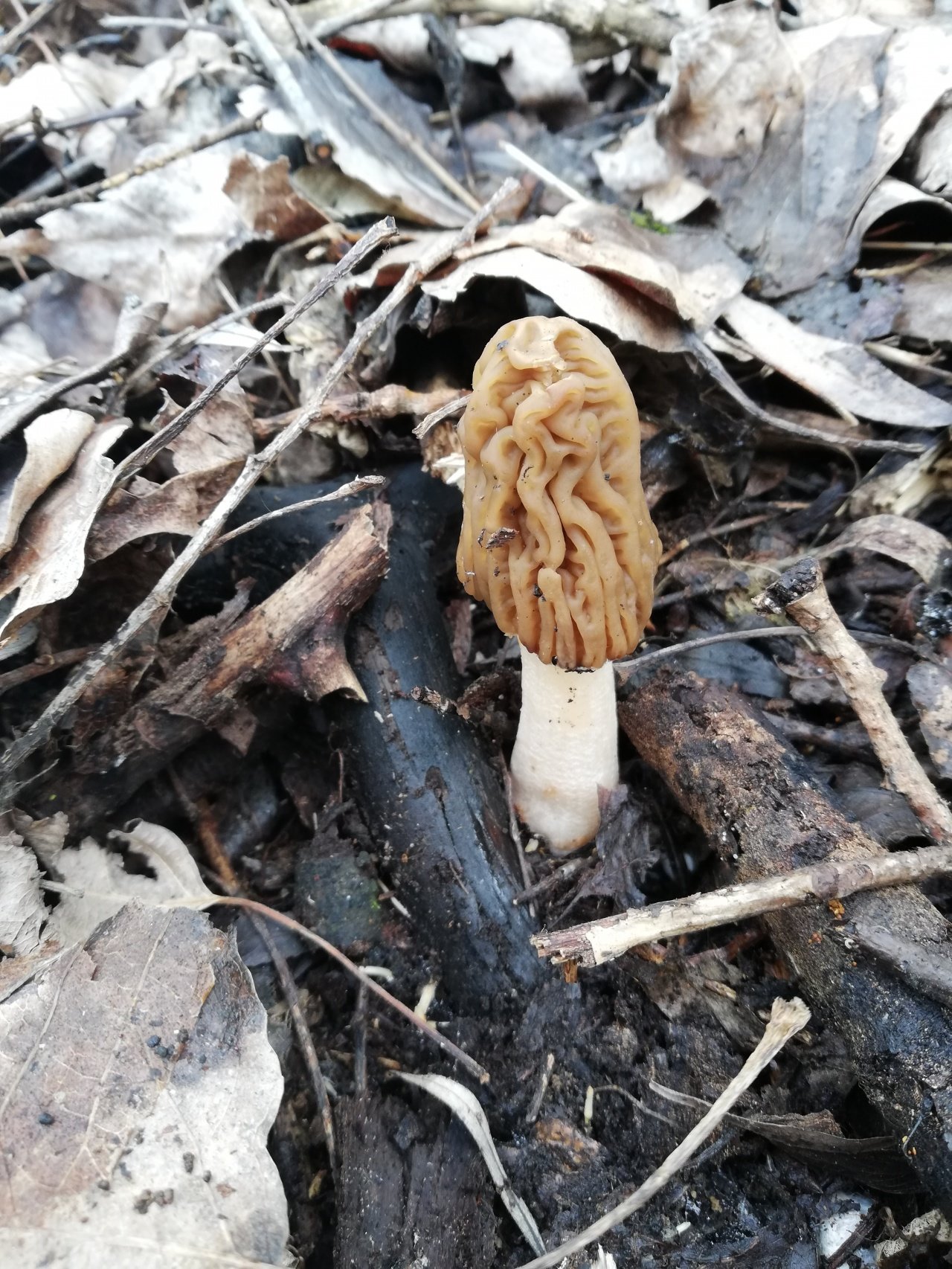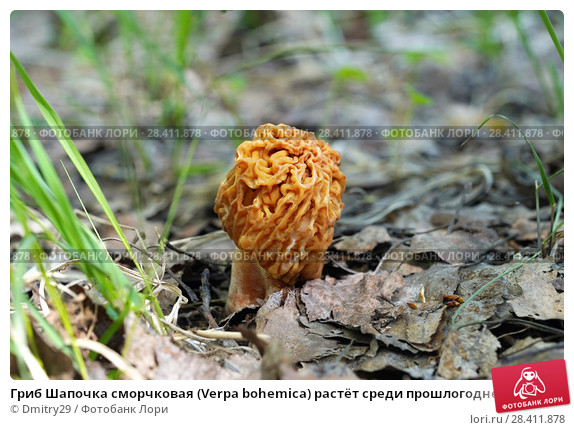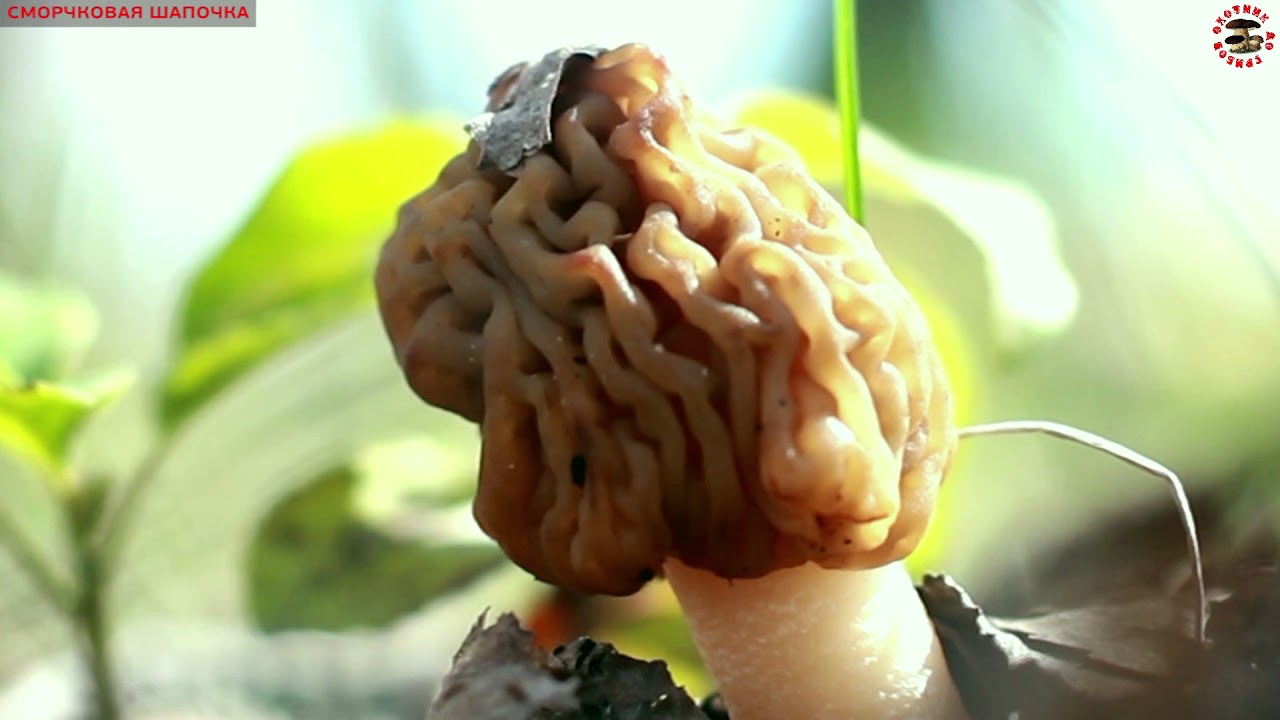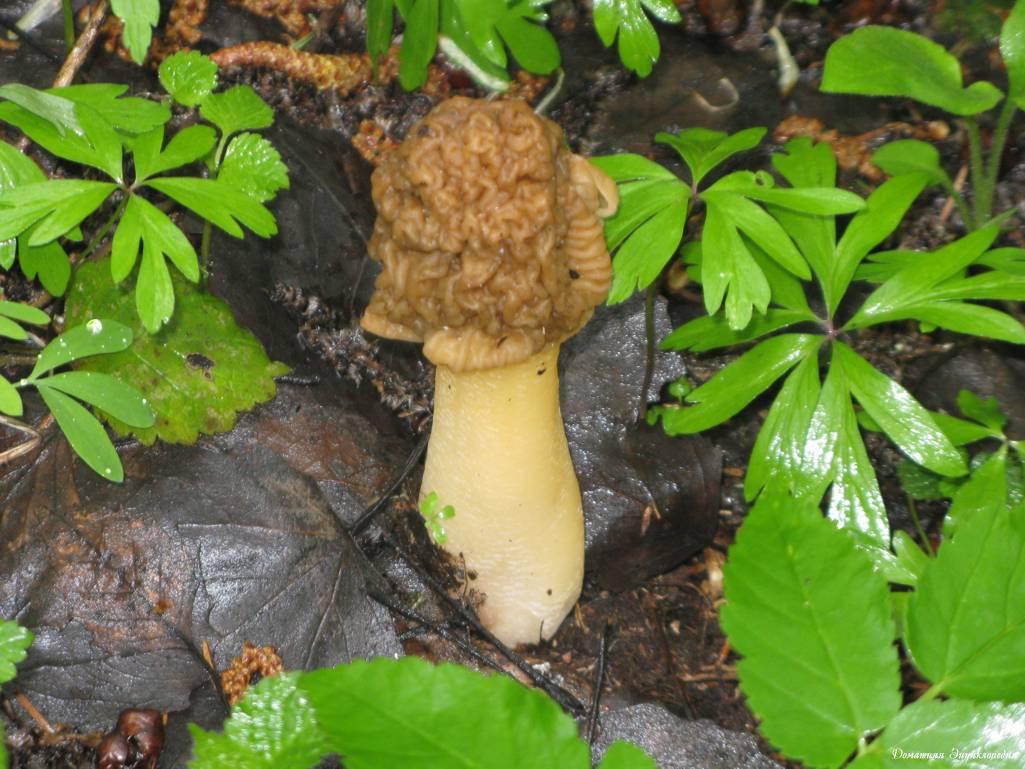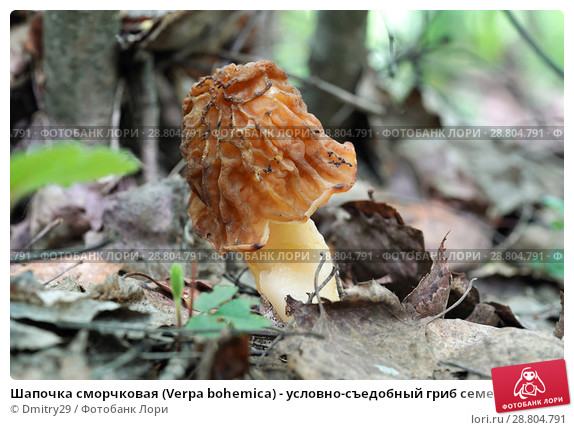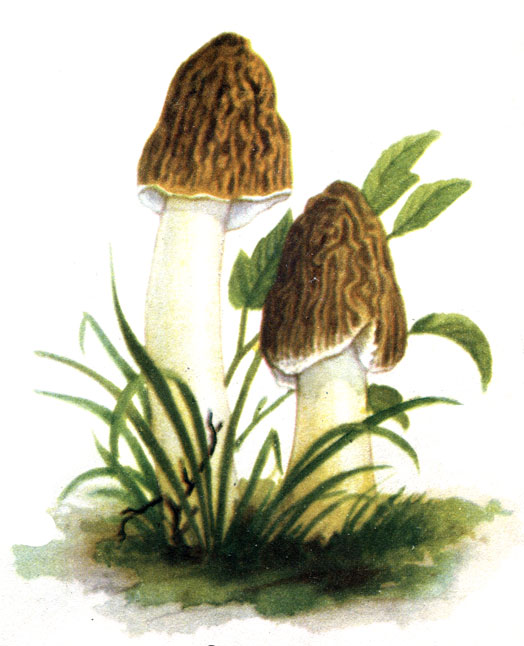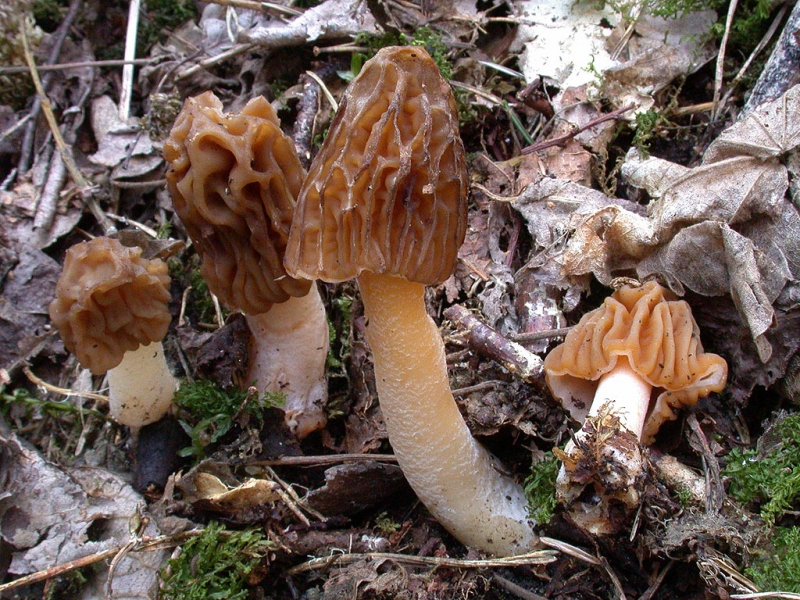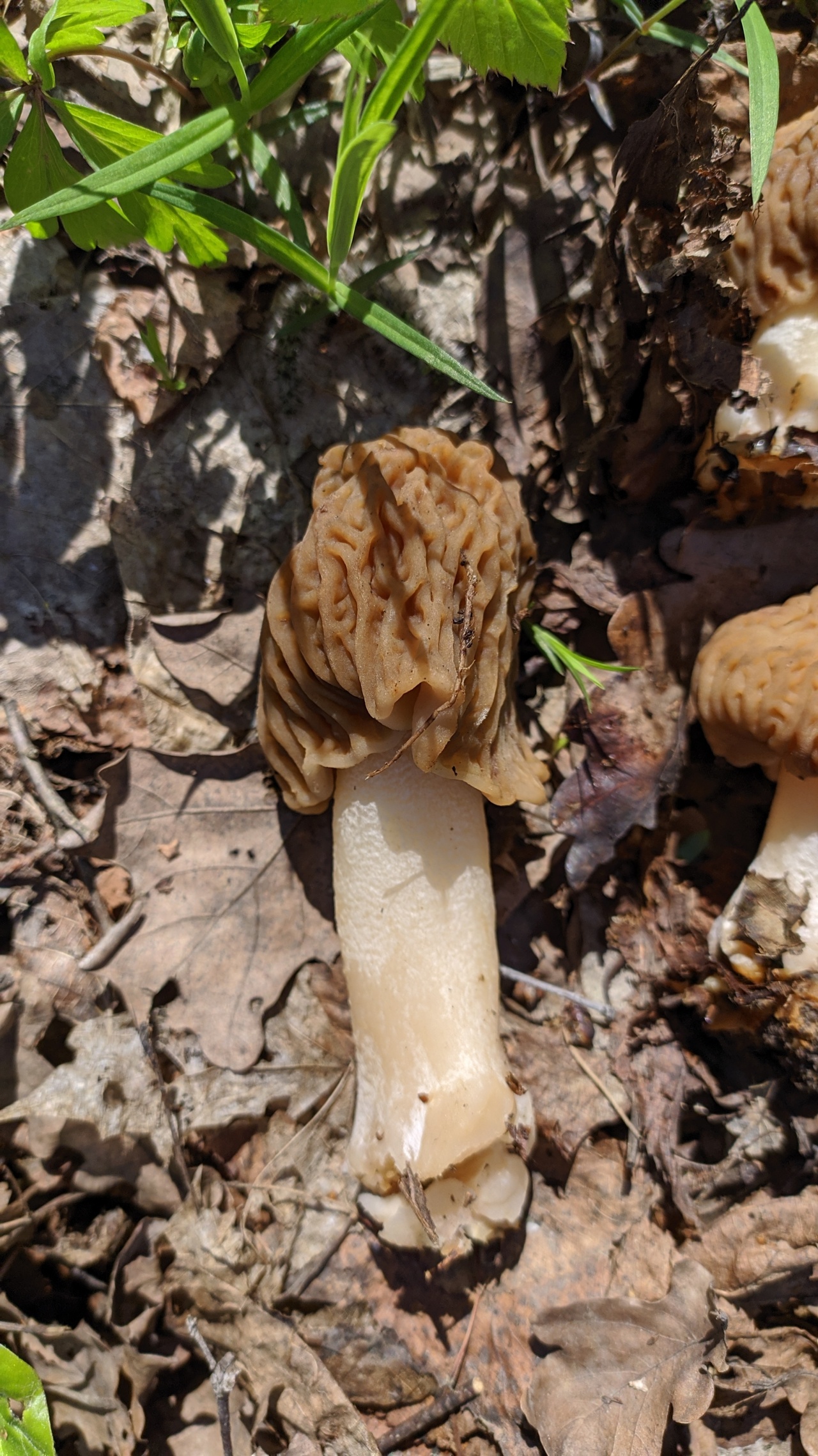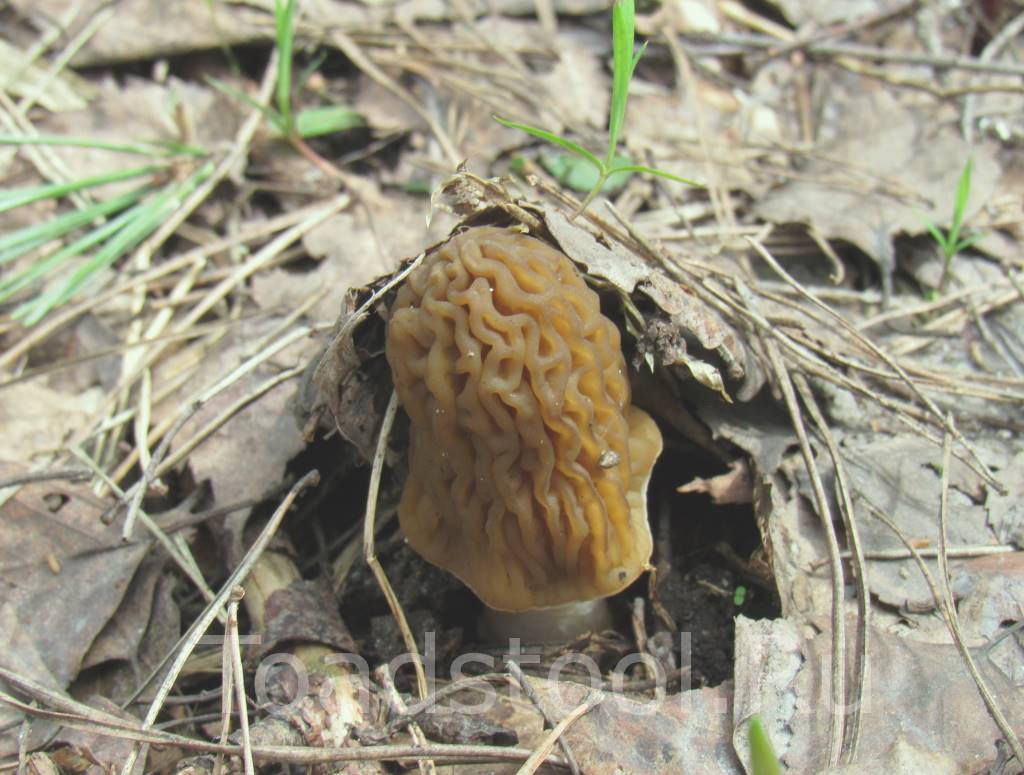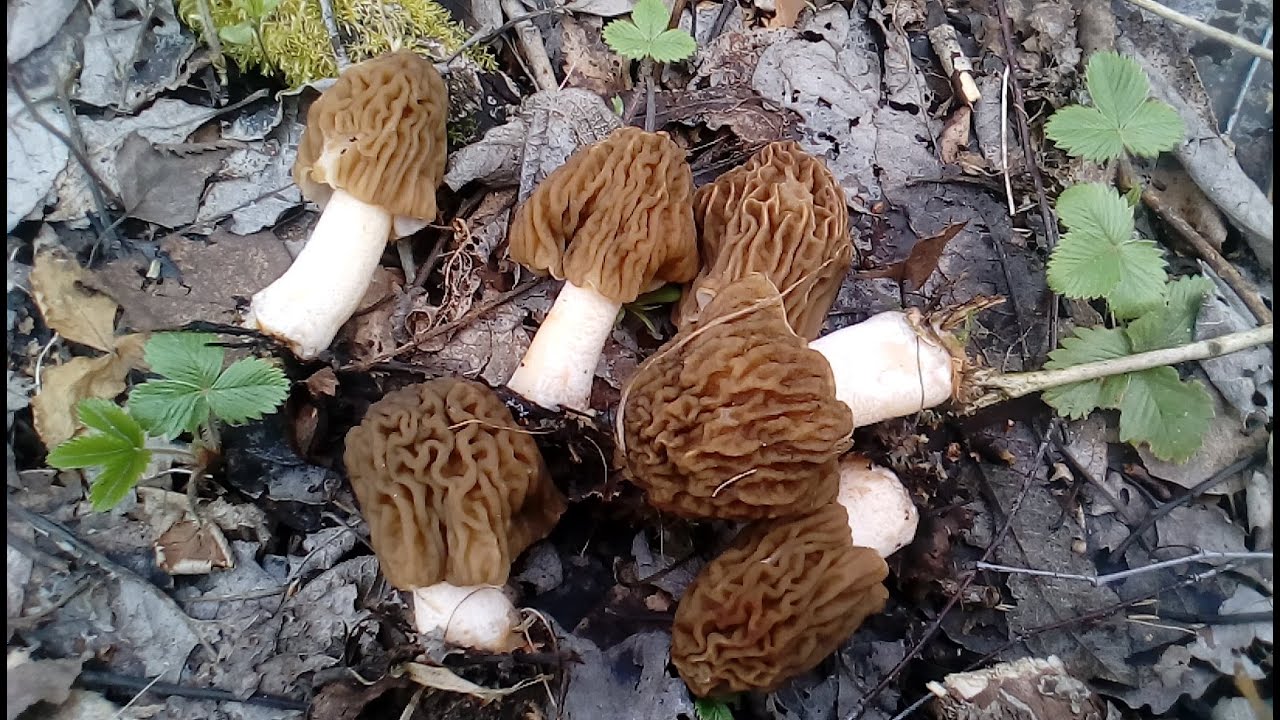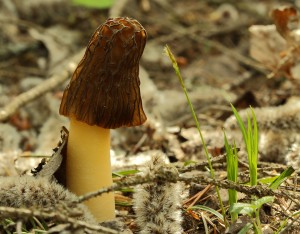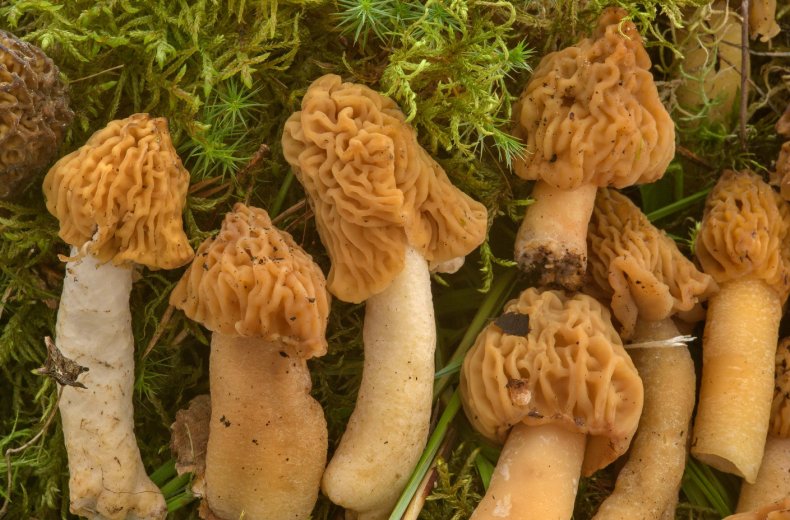How to grow a mushroom yourself?
First you need to choose a suitable place, it must be sunny, on an elevated site. Loamy or sandy loam soil is best suited. To make it convenient to care for and collect mushrooms, they allocate a lot of space: 1.5 meters in width, and any length.
In order for the mushrooms to take root well, a clear sequence should be followed:
- Small pieces of rotten apples are spread on the surface.
- Further, right on the soil where mushrooms will grow, cardboard or paper is burned and ash is scattered over all the beds.
- Then the ground is watered.
- The next step is to sprinkle with pre-prepared mycelium.
- Cover with a 5 cm layer of forest floor.
- Fir spruce branches are sprinkled from the very top (chopped straw is also suitable).
Care is as follows: constant soil moisture, and next spring the cover should be removed. Mushrooms come out of the ground the next spring after sowing. About two kilograms of mushrooms come out from 1 square meter. Once the mushrooms have been harvested, the beds are re-covered and moistened from time to time. Every year, the beds should be sprinkled with the same apples and burned paper or cardboard. If everything is done correctly, then mushrooms can bear fruit for about 5 years in a row.
The morel cap, although not attractive in appearance, is an edible mushroom, in some way even considered a delicacy. This type of mushroom can be grown at home, but for this you need to try and follow all the rules.
Where and when do morel caps grow?
This mushroom can be found on flooded soil with a temperate climate in the northern zone. These mushrooms grow on moist soil only in spring. On dry ground, the morel cap will not survive, it will dry out and die. You can find this mushroom near:
- streams;
- reservoir;
- ditches filled with water.
As for the forest, this type of mushroom can be found in:
- birch;
- linden;
- aspen forests.
Most often they grow in large groups; they cannot be found individually. Prevalence - from the North Caucasus to Karelia. In Russia, morel mushrooms are harvested in the same way as champignons or boletus, Russians love them.
Mushroom pickers should go to the forest for mushrooms and look for:
- linden;
- aspen;
- birch;
- poplar;
- alder.
It is near trees that have lived for at least 30 years that mushrooms grow, and near young trees they are much less common.
As for the soil, they do not grow anywhere, but choose only sandy loam soils, which are covered with leaves and black soil. During dryness, cold weather and excessive moisture, mushrooms die. In the northern parts, a rotten fungus can be seen very rarely.
Morel cap, Verpa bohemica
Hat: Small, cap-shaped and vertically folded, almost freely worn on the leg. The height of the cap is 2-5 cm, the thickness is 2-4 cm. The color is from brown, chocolate (in youth) to yellowish-ocher in adulthood. The pulp is thin, light, with a pleasant smell and no particular taste.
Spore powder: Yellowish.
Leg: Length - 6-10 cm, thickness - 1.5 - 2.5 cm, white-yellowish, smooth, usually curved (up to arcuate), often unevenly flattened from the sides. In youth - whole, very soon, however, an ever expanding cavity is formed. The contact with the cap is weak, only at the very top.
Spreading: One of the "narrowest" morel mushrooms - bears fruit in a very "target" layer somewhere from early to mid-May. Prefers poor flooded soils, grows among young aspens and lindens. Bears fruit in very large groups under favorable conditions.
Similar species: The morel cap, with its almost free “cap” and unsteady stem, is a completely unique mushroom. Only a semi-free morel is similar, Morchella semilibera - in that case, the cap is “semi-free” from the stem, and in the cap a is attached only by the uppermost part.From congeners, a conical cap looks similar, Verpa conica, which has a slightly smoother cap, and Verpa digitaliformis, which is smaller and looks like a finger in a thimble.
Edibility: According to some sources, Verpa bohemica is considered an excellent edible mushroom, perhaps the best among morels, which are not bad anyway. For others, it is a low-value mushroom. On the third, even slightly poisonous, easily causing allergic reactions. True, I cannot confirm this opinion with my personal experience - an insufficient sample. I bought pickled hats near the city of Zadonsk, Lipetsk region. Not impressed.
Author's notes: Like most morels-stitches, the morel cap for me is a mostly mythical mushroom. And even though I saw her with my own eyes at a meeting of mushroom pickers in May 2005, I still cannot fully believe in her: it was a strange, albeit friendly, but alien story. Meanwhile, Yuri Semyonov, in his book, suggests looking for a morel cap in damp, unseeded aspen and linden forests. How many such forest areas (the most common in our area) have I walked in recent years! And the result. However, such forests cannot be called “light deciduous” under any circumstances: linden, unlike aspen, is a broad-leaved tree, which creates such darkness in the lower tier that the beech forest will seem like a cheerful birch forest here. So, it is quite possible that I was looking in the wrong place. Well, we'll think of something else, I suppose.
So, probably, a multifaceted hat, Verpa digitiormis, could look like. However, this is only an indicative illusion - otherwise it would have been necessary to assume that a traitor has entered the group of morel hats, and this, of course, is unlikely.
Of course, a morel cap is not always something long and lopsided. Young specimens of Verpa bohemica look quite the same as morels, and only as the fungus ages does it acquire its specific features.
A curious feature of the morel cap is to detect a left or right slope at a young age, go through all the stages of imitation of the Leaning and Babylonian towers, and then begin to grow down - literally - turning into an outward likeness of some kind of stubborn earthworm.
It can be difficult to imagine, but in fact, the morel cap is an extremely inconspicuous mushroom. When she is already in sight, it is not clear how she managed to hide out of the blue. but this is already in sight.
Two things should be said about the young hat. Firstly, it is much smaller than it looks in the photo. Secondly, from above it is completely invisible - only in this way, in isometric projection, it becomes clear that someone is still there.
A rare case is the morel cap, which is not hiding from anyone. Is there a catch in this?
Appearance
The hat has a wrinkled surface. Its dimensions can range from 2 to 6 cm in height, and its width is 1-4.5 cm. The color of the cap changes with age. In a young mushroom, they have a dark brown tint. But in an adult it is lighter, turns yellow or ocher. With the leg, it grows together only at the top, and in the lower part, its surface is smooth, has veins.
The leg is bent. Its length can be up to 14 cm, but most mushrooms have a stem 5-10 cm long. It is cylindrical in shape, but sometimes flattened. Its thickness is 2-3 cm. The old mushroom has hollow legs. Young morel caps have flesh in the stem that resembles cotton wool in consistency and has a yellowish color.
Among the mushrooms, morels also include species such as common and conical morel. They are conditionally edible.
Types of morels and stitches
Morel ordinary, or edible, real (Morchella esculenta)
The weight of the mushroom reaches 500 g. The diameter of the cap is 3-5 cm, the shape is ovoid or ovoid-round. The edge of the cap grows together with the leg. The color of the cap is yellow-brown, brown, rarely gray-brown. The surface is reticulated.The leg is fragile, up to 7 cm high, about 2 cm thick, cylindrical, hollow, whitish or brownish, smooth or furrowed, widens towards the base. The pulp is thin, fragile, wax-like. The hat and the leg are the same in height. The inside of the mushroom is hollow.
Morel conical (Morchella conica)
The cap grows together with the stem, brownish or brownish-gray, eventually turns brown. Diameter about 5 cm, height up to 10 cm, conical or oblong-ovoid shape. The surface is cellular or ribbed. The pulp is waxy, has a weak mushroom odor. The leg is 2-5 cm long, 1.5-3 cm thick, cylindrical, hollow, whitish or yellowish, fragile. The surface is smooth or notched.
Morel cap (Verpa bohemica)
Found in deciduous forests, often under aspen trees. The cap is brown or yellowish-brown, up to 5 cm in diameter. It looks like a bell, the surface is folded, the edge is wavy-sinuous. The cap is attached to the leg only in the center. The leg is 6-14 cm high, about 2 cm thick, cylindrical, whitish or whitish-yellowish, smooth or pubescent. Hollow inside. The mushroom has a pleasant smell.
High morel (Morchella elata)
The cap is narrow, conical, 4-10 cm in height, 3-5 cm in diameter. The surface is covered with olive-brown cells, in mature mushrooms they turn brown or black-brown. The stem is cylindrical, granular, 5-15 cm long and 3-4 cm in diameter. In young mushrooms, the leg is whitish in color; as it grows, it becomes yellowish or ocher.
Fruiting in April-May. A rare species, found on the soil of coniferous and deciduous forests, in glades and forest edges, in gardens and vegetable gardens. Grows in the mountains.
Giant stitching (Gyromitra gigas)
The fruit body looks like a brain or a walnut. The cap is covered with convolutions, hollow, irregularly rounded, folded, with a velvety surface, yellowish or yellowish-ocher color. Diameter 8-30 cm, the edge is connected to the leg. The leg is irregular in shape, short and wide, the surface is furrowed-folded, hollow inside, whitish in color. The pulp is thin, brittle, waxy, has a pleasant mushroom aroma.
The fruiting season coincides with the morels. This is a spring mushroom. Grows in groups in deciduous and mixed forests, often near birches, in Europe and North America.
Ordinary line (Gyromitra esculenta)
A cap of irregular shape, like a brain, up to 10 cm high, about 15 cm in diameter. In young mushrooms, it becomes smooth, wrinkled as the mushroom matures. The color of the cap is brown, occasionally red, orange or purple. The leg is 2-3 cm long, 2-6 cm in diameter, even, hollow inside, tapers towards the base. Light, with a pink tint. The pulp is waxy, brittle, the taste is pleasant, the smell is fruity.
It grows on sandy soils, in places of deforestation, under conifers and poplars. Found in Europe, Asia and North America.
Poisonous and inedible species of morels and stitches
Autumn stitching (Gyromitra infula)
The cap is 2.5-10 cm in diameter, the shape is saddle-shaped or irregular, 2-4-lobed, the edge is tucked up, adheres to the stem. The surface is red-brown or dark brown, wrinkled, pale underneath, velvety to the touch. The flesh is grayish, thin. Leg 2-6 cm long and 2-3 cm in diameter, hollow, fine-grained, whitish with a pink tint.
Grows on soil and decaying wood of deciduous and coniferous species, bears fruit in autumn. Found in Eurasia and North America.
Description of morel cap
Morel cap (pictured) is an early spring mushroom that grows up to 15 cm in height. The color depends on the age and place of growth. In young specimens, the color is brown, as it grows, it turns yellow or dark beige. The pulp is creamy, thin on the cap, fleshy on the stem, brittle, has a pleasant smell and mild taste.
Description of the hat
The upper part of the fruit body is cone-shaped with an uneven, wavy, vertically folded surface.Attached to the stem in the center, the edges are lowered.
The photo shows an adult morel cap mushroom; at any stage of the growing season, the cap does not open. Its average length is 4-6 cm, width is 4 cm. The surface is dry, smooth, slightly transparent.
Leg description
The shape is cylindrical, slightly compressed from the sides, it can be straight-growing or curved. It is wider at the base than at the top. There are specimens with a leg fused at the mycelium.
In old mushrooms, the structure is rigid, hollow, fibrous, the surface is finely scaly. In young specimens, it is whole, with a porous pulp. Length - 10-15 cm, width - 2.5 cm. 1/3 of the length of the leg is covered with a hat.
What is also the name of the morel cap
The morel cap mushroom is known under different names:
- Czech verp;
- morel conical cap;
- Morchella bohemica;
- morel tender;
- cap.
The species got its name from its resemblance to the more famous and common edible morel.
What mushrooms can be confused with a morel cap
The species has no official double, rather the morel cap refers to the false morels. At first glance, the cap looks like a line.
A closer look reveals clear differences. The shape of the cap at the line is raised up, is not domed on the leg, divided into several lobes. The leg, extended upward in the form of a funnel, with an uneven surface. The color of the top of the fruit is always darker than the bottom. Grows on roadsides and in coniferous forests.
A warning! The mushroom is poisonous and causes severe intoxication.
What is the difference between a morel cap and a morel
There are no obvious differences between morels and morels. It is easy to confuse these types.
They grow at the same time, prefer moist soil. They belong to the same group of conditionally edible. And the way of processing fruiting bodies is no different. If during collection the two species are mixed, nothing terrible will happen.
They grow in numerous groups, the first specimens are found at the end of April. The biological cycle of the species is short. The size is larger than the caps, can weigh up to 350 g. Inside, the fruit bodies are hollow, the structure is fragile. The cap is round or ovoid, fused with a leg along the edge, which differs from the Czech verp. The surface is formed in the form of deep cells of various shapes. Young specimens are light beige; the older the specimen, the darker the color. There are dark brown with a gray tint. The stem is the same size as the cap, bumpy, cream or white, thickened at the base. For comparison, the top photo shows a morel, below is a Czech verp.
How to cook a morel cap
Preliminary processing:
- The harvested crop is pre-soaked (for 2 hours) in cold salted water with the addition of citric acid. During this time, insects will leave the fruit body and debris will settle.
- At the base, the fruit stem is cut off.
- Then the mushrooms are boiled for 15-20 minutes, the broth is drained, since it contains toxins.
- The mushrooms are washed with hot water, the liquid is allowed to drain.
After processing, the raw material is ready for use. You can cook a morel cap like any mushroom. Fruit bodies are fried, stewed with vegetables, soup is boiled. The treated caps can be dried without losing their shape and flavor. The Czech verpa is used for winter harvesting or frozen in the freezer. Fruit bodies are versatile and taste good.
How to pickle
Spring mushrooms are better prepared with marinade as a preparation. The technology provides for heat treatment. One of the easy pickled morel cap recipes contains the following ingredients:
- 2 kg machined caps;
- 1 liter of water;
- 2 tsp salt;
- 0.5 tsp citric acid;
- 2 tbsp. l. Sahara;
- 5 tbsp. l. vinegar (6%);
- 5 pieces. bay leaf.
Add pepper and cloves as desired.
Recipe sequence:
- Jars are sterilized, filled with mushrooms.
- All ingredients (except vinegar) are added to the water.
- Boil for 10 minutes, add vinegar.
- Mushrooms are poured with boiling marinade.
- Roll up the lids.
Banks are wrapped in a blanket and left for a day, then transferred to the cellar.
How to bake in sour cream
The recipe is for 0.5 kg of processed caps. Components of the dish:
- 2 tbsp. l. butter;
- 50 g of hard cheese;
- 1 tbsp. l. flour;
- 1 egg;
- 250 g sour cream.
Cooking morel caps in sour cream:
- Mushrooms are cut and fried in oil.
- Salt and spices are added to taste.
- Add flour, fry for 3 minutes.
- Pour in sour cream, stew for 5 minutes.
Put the contents of the pan on a baking sheet, pour over a beaten egg, sprinkle with cheese. Bake at t +180 0C until golden brown.
How to salt
Morel cap salting recipe:
- 1 kg of processed fruit bodies is placed in a container.
- Pour a mass of 50 g of salt.
- Put oppression on top.
- Leave for 12 hours.
During this time, under the influence of salt, the caps will give liquid. Add 0.5 tbsp to the mass. water and bring to a boil. A bay leaf, pepper, currant leaves in a small amount are thrown into the brine, boiled for 2 minutes. Mushrooms are packed in jars, closed with nylon lids.
Important! The product will be ready in 60 days, it is necessary to store the workpiece in the refrigerator
Primary processing and preparation
The morel cap belongs to the III category of mushrooms and is conditionally edible. It is used for food only after preliminary cooking (about 20 minutes) with draining of water, or it is dried. Moreover, not less than a month. In general, it can be stewed, boiled, fried.
To remove debris from the folds of the cap, morel caps can be soaked in brackish cold water for several hours before processing, and then rinsed with boiling water.
In some sources, the cap is considered inedible and can cause allergies and poisoning. The fact is that it contains a toxin that is removed during cooking or drying.
The pulp of the morel cap is rich in nutrients and, in terms of their content, is close to the mushrooms of the highest categories. After proper processing, the fruit bodies of the species are even considered delicious. And thanks to the high content of vitamins, the hat will be an excellent addition to the human menu in the spring.
Morel cap
The fruiting bodies (apothecia) of the morel cap are large, fleshy, up to 10 cm or more in height, usually described as caps.
Ecology and distribution
The fungus is common in the temperate zone of the Northern Hemisphere. Prefers flooded soils, loamy and sandy loam; grows in light deciduous and mixed damp, ungraded forests, always next to linden, aspen or birch. More common in lowlands; settles along streams, ditches and water pits. Under favorable conditions it grows in very large families - up to 50-80 specimens. At different stages of the life cycle, it is probably a mycorrhizal and saprotrophic fungus. Morel cap does not tolerate low humidity and dries quickly on the root. Season April - mid-May, bears fruit most abundantly in the first half of May.
Edibility and taste
The cap is a conditionally edible mushroom. Before cooking, it should be boiled for 10-15 minutes. in a lot of water, which is then poured out. After such heat treatment, it acquires a very delicate taste and becomes soft. Further, it can already be prepared in a variety of ways: salt, pickle, fry, stew, and so on. In the old days, they preferred to stew them in cream. So their taste became even softer.
Morels can also be eaten dried. The toxins contained in it decompose after drying within a month. You cannot eat and taste a raw morel cap.
Conical cap (Verpa conica)
- Multiple cap
- Verpa conical
Beanie conical Verpa conica
External description A small mushroom like a finger with a conical thimble on. Thin-fleshy, fragile fruiting bodies 3-7 cm high.Longitudinally wrinkled or smooth cap with a diameter of 2-4 cm, brown or olive-brown in color, adhered to a smooth, whitish, hollow stem 5-12 mm thick and 4-8 cm high ...Elliptical, smooth, colorless spores 20-25 x 11-13 microns. The color of the cap varies from olive to dark brown.
Edible Edible but of mediocre quality.
Habitat Grows on calcareous soil, near hedges, among bushes.
Season Late Spring.
Similar species Sometimes confused with morels (Morchella).
Difference from false doubles
The morel cap has a characteristic appearance that is difficult to confuse with other types of morels. A feature that helps to calculate it almost accurately (including from photographs) is a loosely attached hat that easily tilts from side to side or comes off.
Stitching and morel cap
However, sometimes inattentive and inexperienced lovers of quiet hunting confuse a mushroom with lines. There are different opinions about the edibility of the latter, since even after processing, a certain amount of poison remains in their fruit bodies. If your health is dear to you, it is advisable to refrain from using lines in any form.
| Morel cap | Stitching |
| the cap is freely attached to the leg | the edges of the cap are firmly attached to the leg |
| slender leg with a flat surface | leg of irregular shape |
| grows in deciduous forests | grows mainly in coniferous forests |
| soft, pliable pulp | tough and firm flesh |
Similar species
Since the cap of representatives of this species is attached to the stem only at the top, it is quite simple to distinguish this mushroom from others. There are similar toxic stork mushrooms in which the cap and stem are well connected. These mushrooms can be found more often near a coniferous tree. And their pulp is more dense.
Since these species are very similar to honey in themselves, both are considered conditionally edible. That is, before cooking, they must be cooked.
It is important to remember that the toxin gyromitrin will not completely leave the morels. In order for the toxin to leave the pulp completely, the mushroom is dried for at least six months.
It can also be dried at high temperature.
What edible mushrooms can be picked in summer at the beginning and end of June: list, names, photos
In June, wheat and rye begin to spike in the fields, which means that in all regions of our delightful country you can start looking for boletus, aspen and, of course, porcini mushroom.
It is worth collecting 3-4 days after rain. But if you really want to, then you can go in two days for the first hunt, especially if there are a lot of competitors-mushroom pickers in your area.
Boletus
Aspen boletus
White mushroom in summer
In a pine forest, in humid places, you can find boletus. They grow in large groups and grow so quickly that you just have to blink. If you find them once - remember the place and come again in a few days.
Butterlets in summer
By the middle of the month, you can already find summer mushrooms, and they bear fruit until November. Remember or mark on the map where you collected them and you can collect them again and again for the next six months.
Summer mushrooms
In addition, russules (they are delicious in salting), as well as popular chanterelles, begin to grow on country paths and in mixed forests.
Russula
In the fields, as well as birch and pine plantations, you will find luxurious thickets of a raincoat. In the morning it will rain - and by lunchtime there is a field of mushrooms. Take and collect!
Thickets of mushrooms raincoats
Also in mixed and coniferous forests, you will find green moss, wood-loving Colliques, forest mushrooms.
Green flywheel
Collibia wood-loving
Forest mushrooms
Meadow honeydew grows in meadows and near lakes. Their advantage is their small size and large piles that cover the glades.
Meadow honey
And when talking about June mushrooms, it is impossible not to mention delicious pigs.
Pigs
For those who went out on a quiet hunt in the bushes and mixed forests at the end of June, it is worth looking carefully for the Valui. But remember - edible mushrooms are young, with a cap that does not reach 10 cm. If a depression with liquid appears in the middle, you should not even pluck them, they are already poisonous.
Valui
For those who like to dig deeper into the foliage of the forests in June, there is something to do - for example, look for Podgruzdki. They grow in a peculiar way, half in the ground, half under the foliage. From the side they can never be found, only by the tubercle of leaves. But if you already find one, you will probably collect a basket, or even a bag of goodies.
Loadings
Also, do not miss the summer honey fungus. It is smaller than usual, but its taste is in no way inferior.
Summer honey
Morel cap video
I have been collecting mushrooms since childhood, but I found my first morel cap not so long ago. Several years ago, on a social network, I crossed paths with one wonderful mushroom lover who successfully collected these mushrooms in the vicinity of Kiev and shared photos.
In his words: Morel caps appear in early spring and disappear quickly. They are not always easy to find. Two, maximum three weeks after the snow has melted - and then that's it ... Morel caps may appear next to the remnants of snow, but still when it has already warmed up.
They should be caught in mid to late April if the weather is right. And in a couple of weeks they go away.
Dates: April 15, April 22, 2012 Places: the outskirts of Kiev in the TEC-6 area in Troyeshchina, the vicinity of forest reservoirs in the DVRZ area ...
At this time, there were puddles in the forest formed from melted snow. Morel caps grow next to them, or even right in puddles.
And more notes from the Internet about morels: It is believed that morels have already "gone" when the earrings appear on the aspen.
Peeled mushrooms are soaked for several hours, washed well and boiled in salt water, preferably in two waters for 20 minutes each. Then they are fried in vegetable oil.
Attention: not to be confused with the line - a dumb mushroom that can be poisonous

